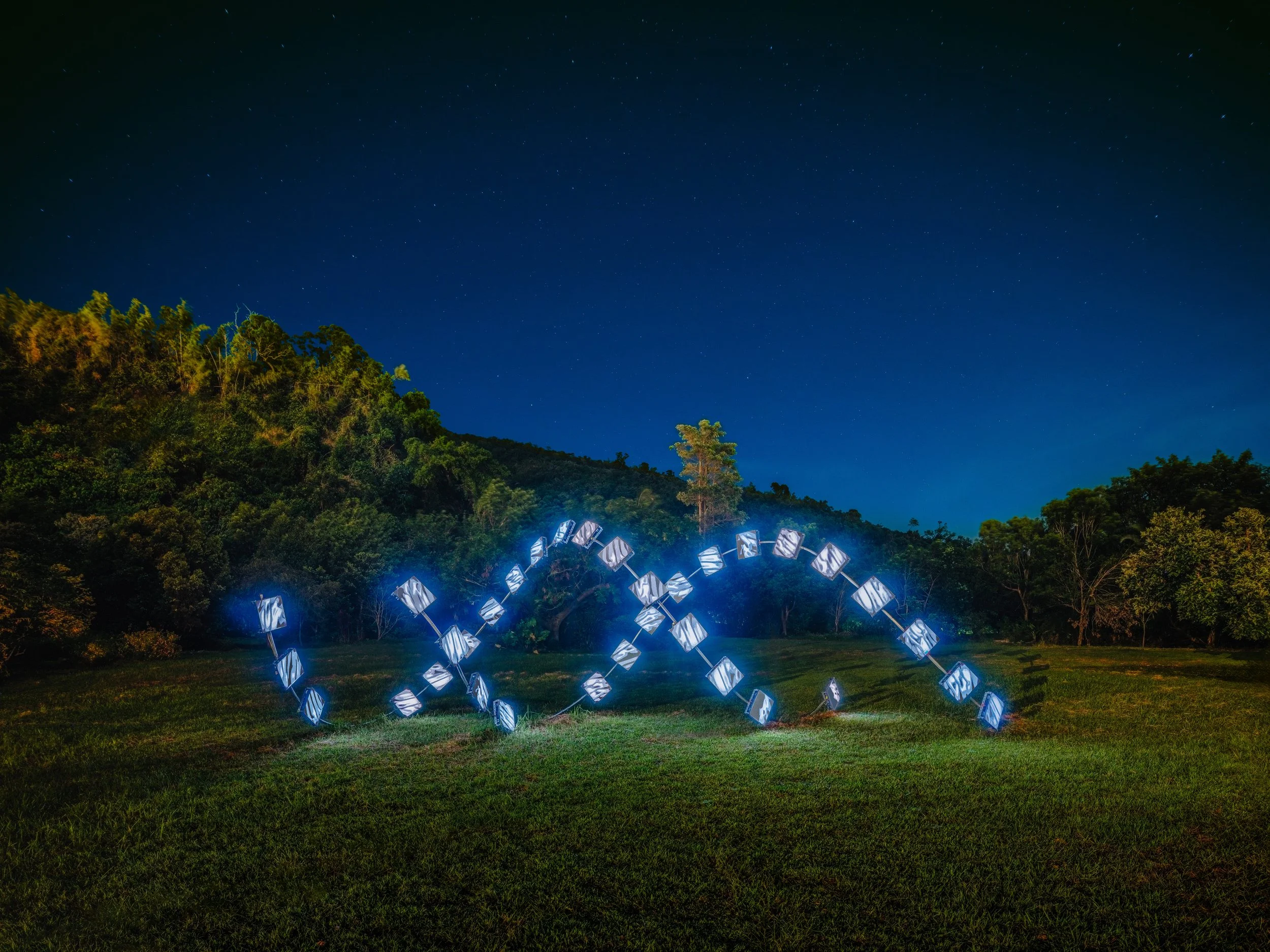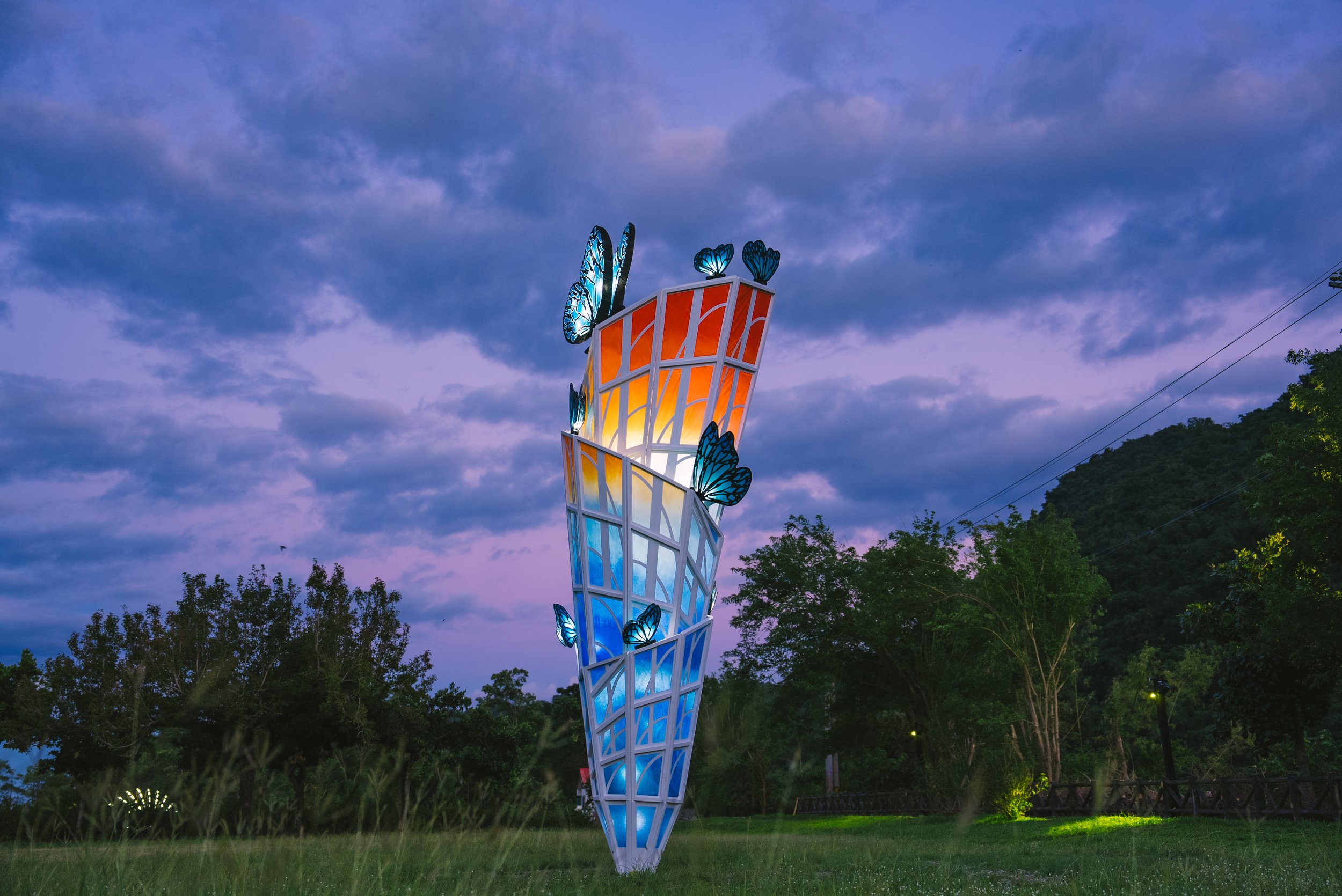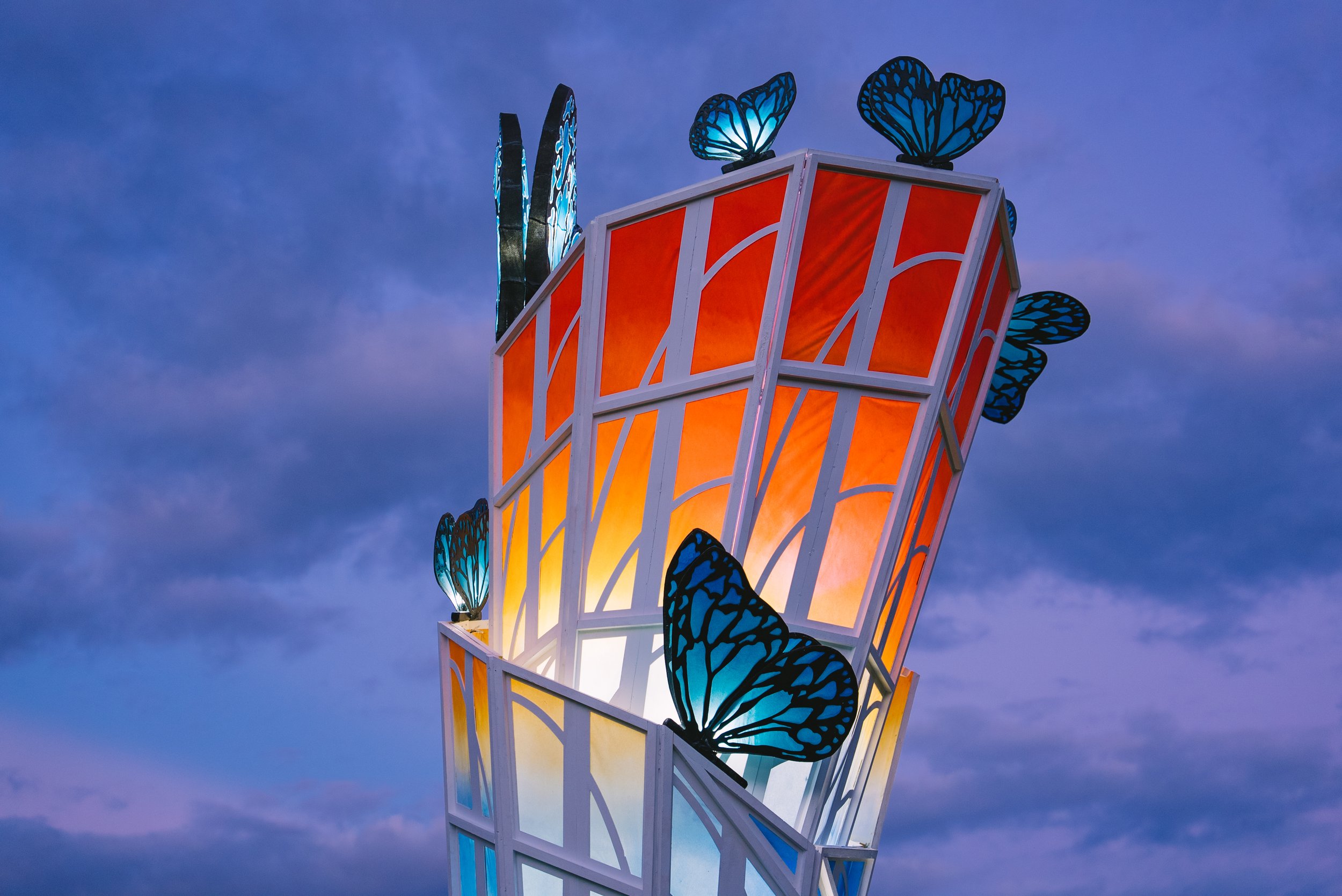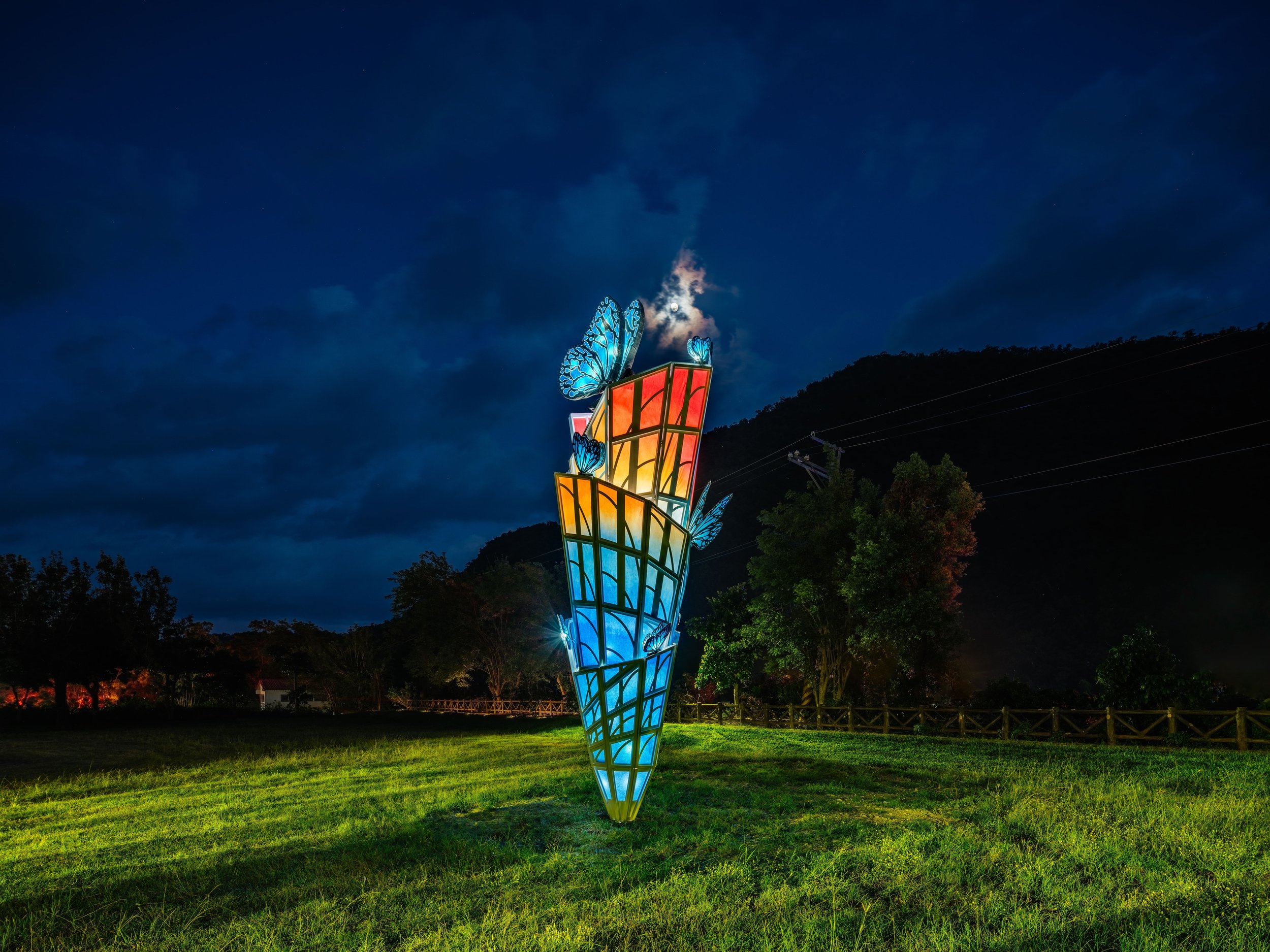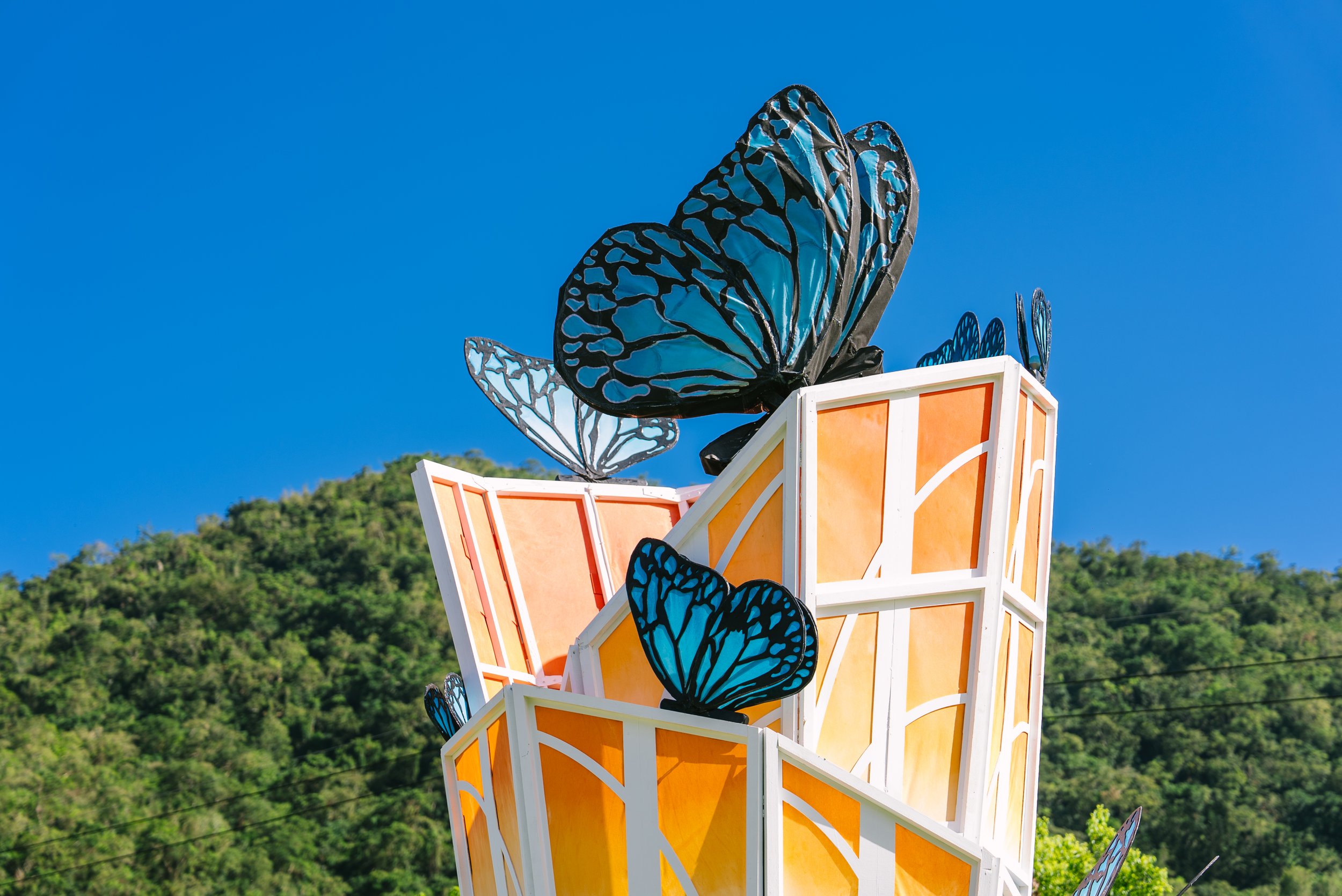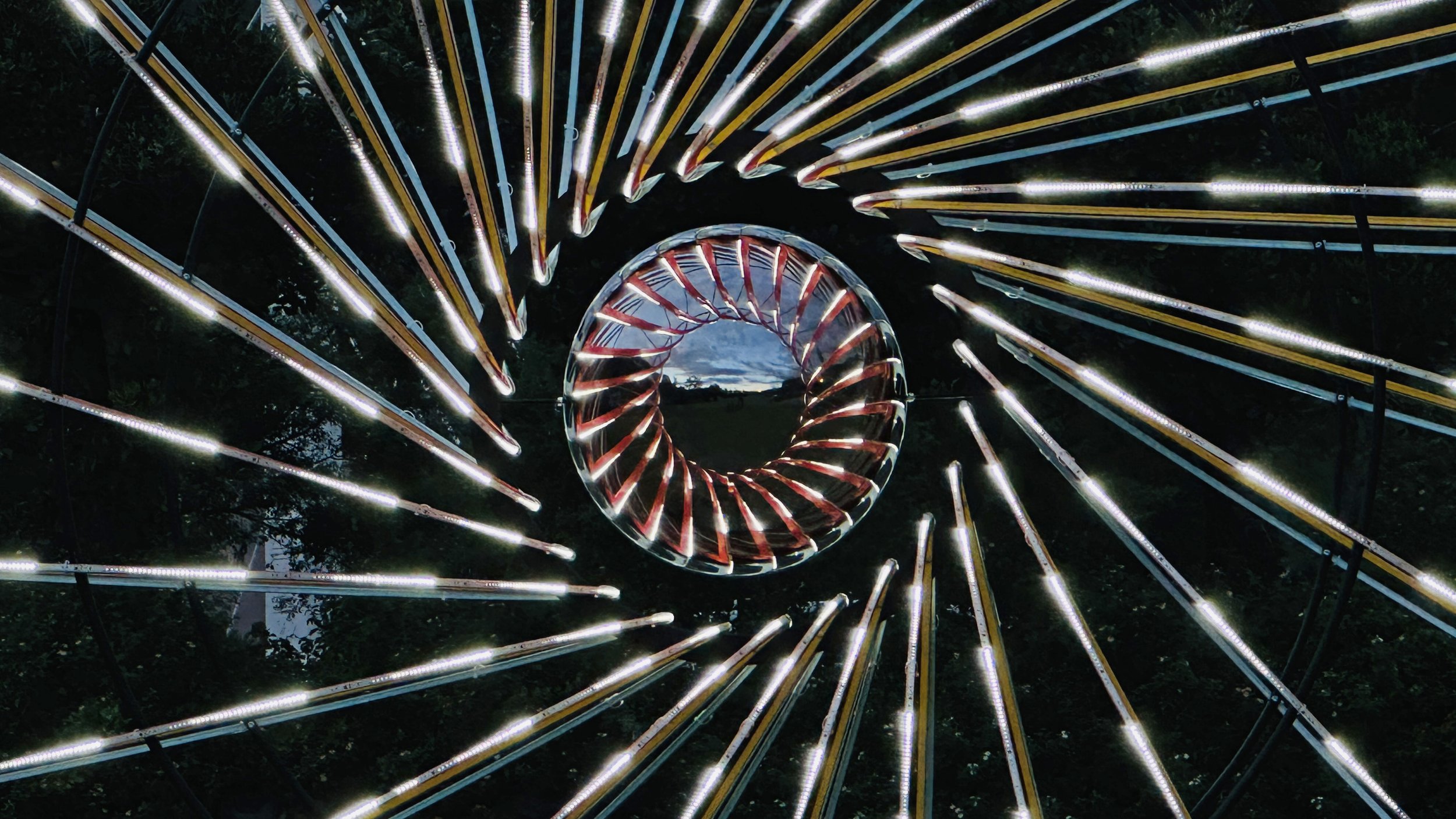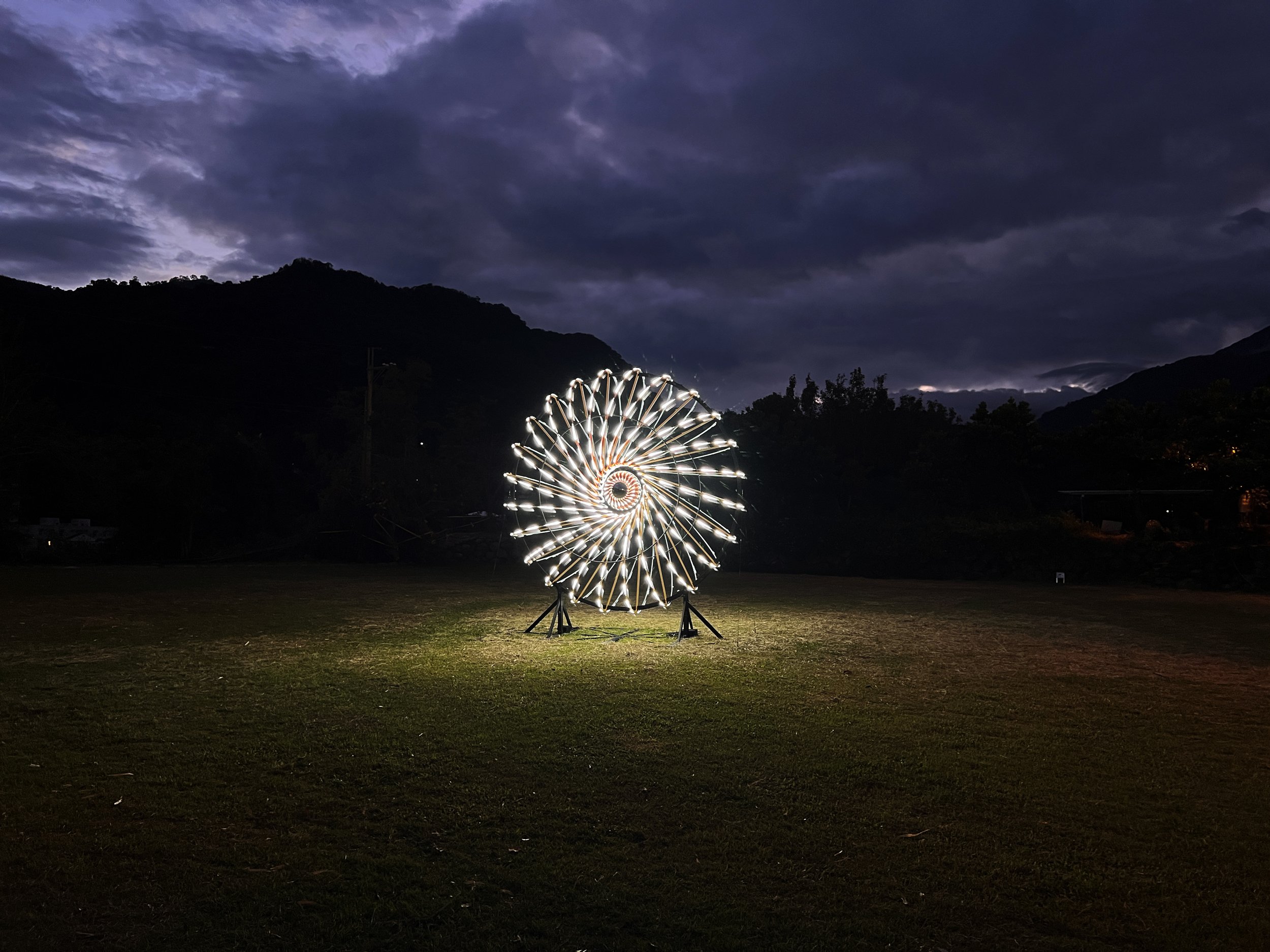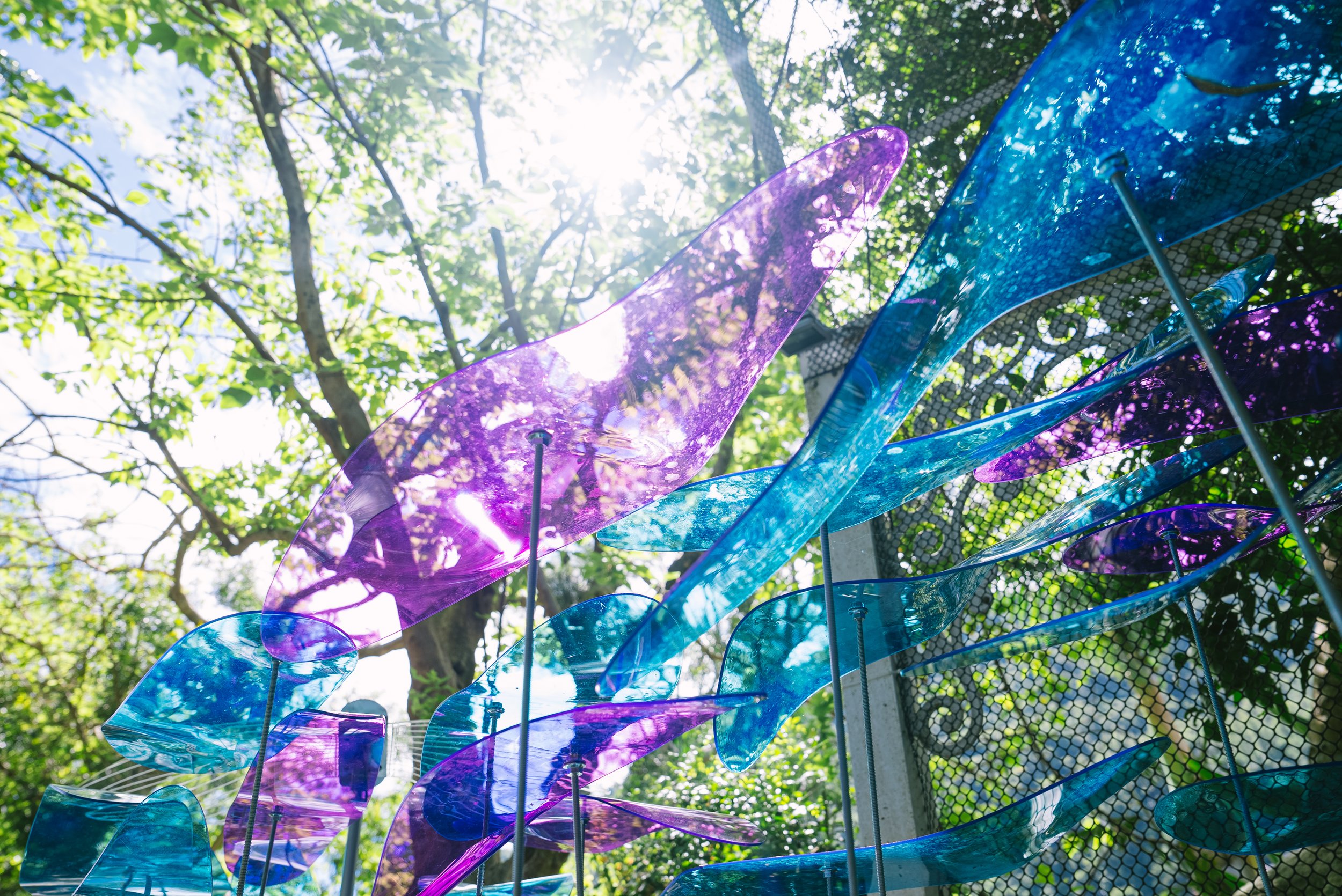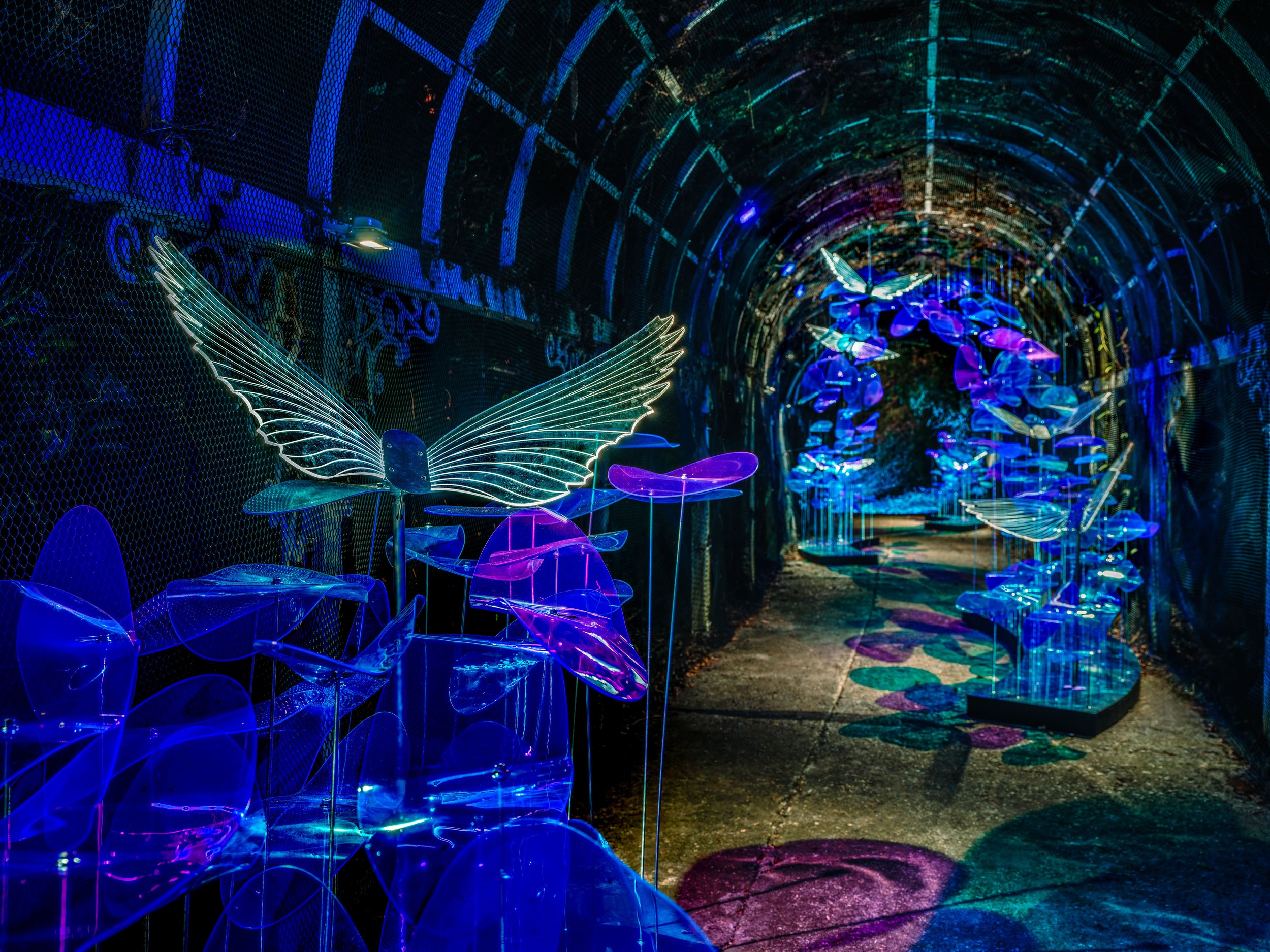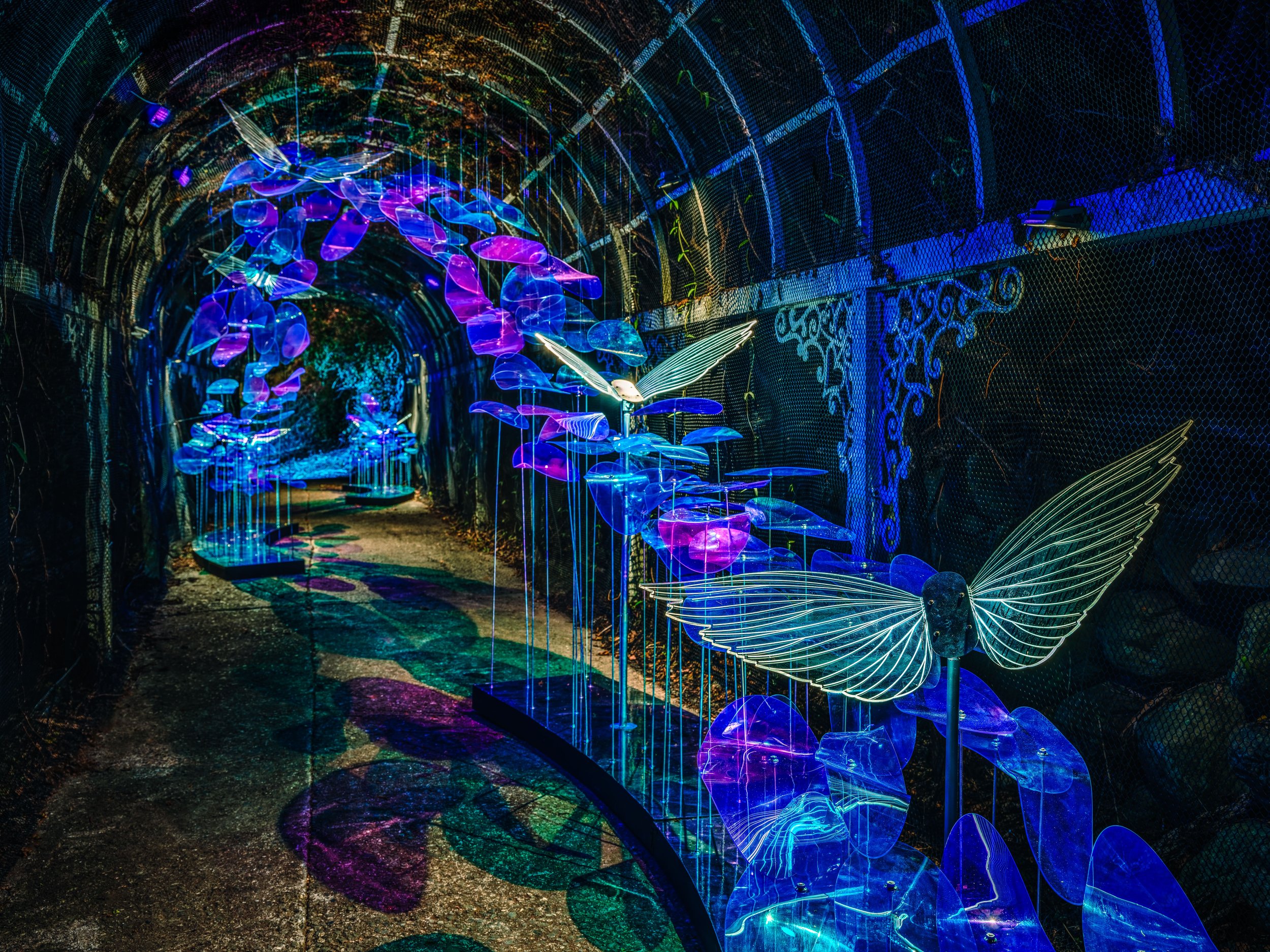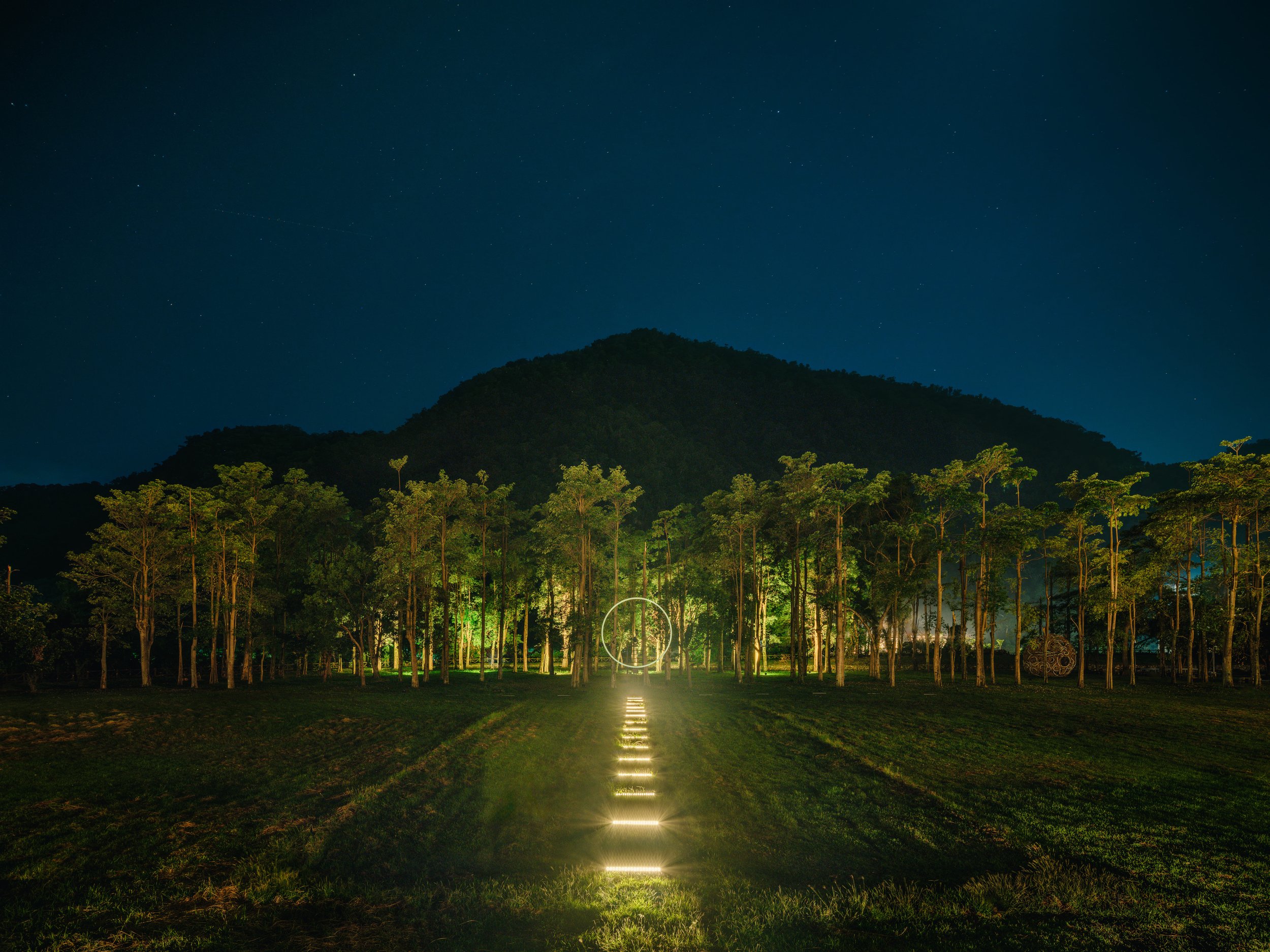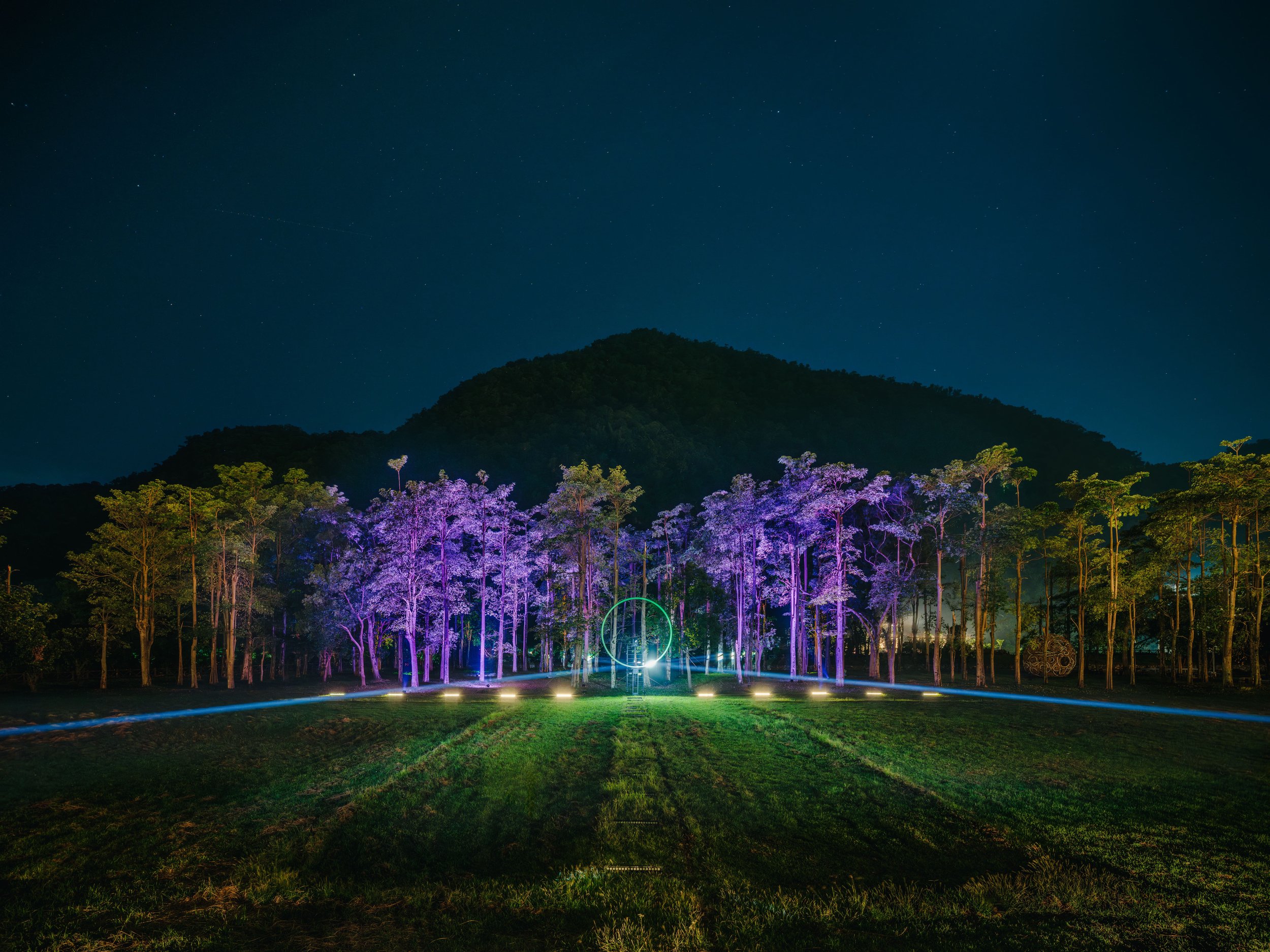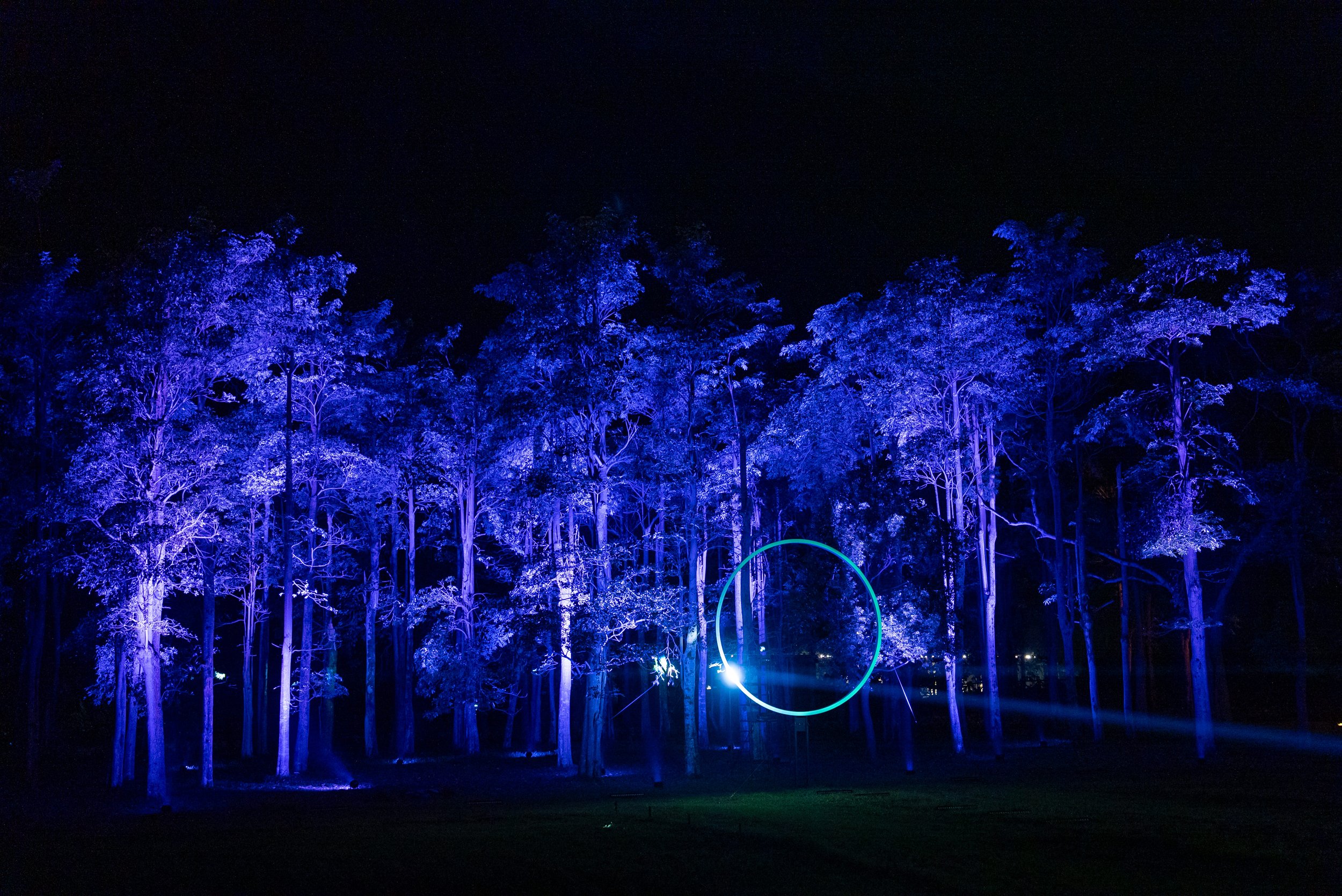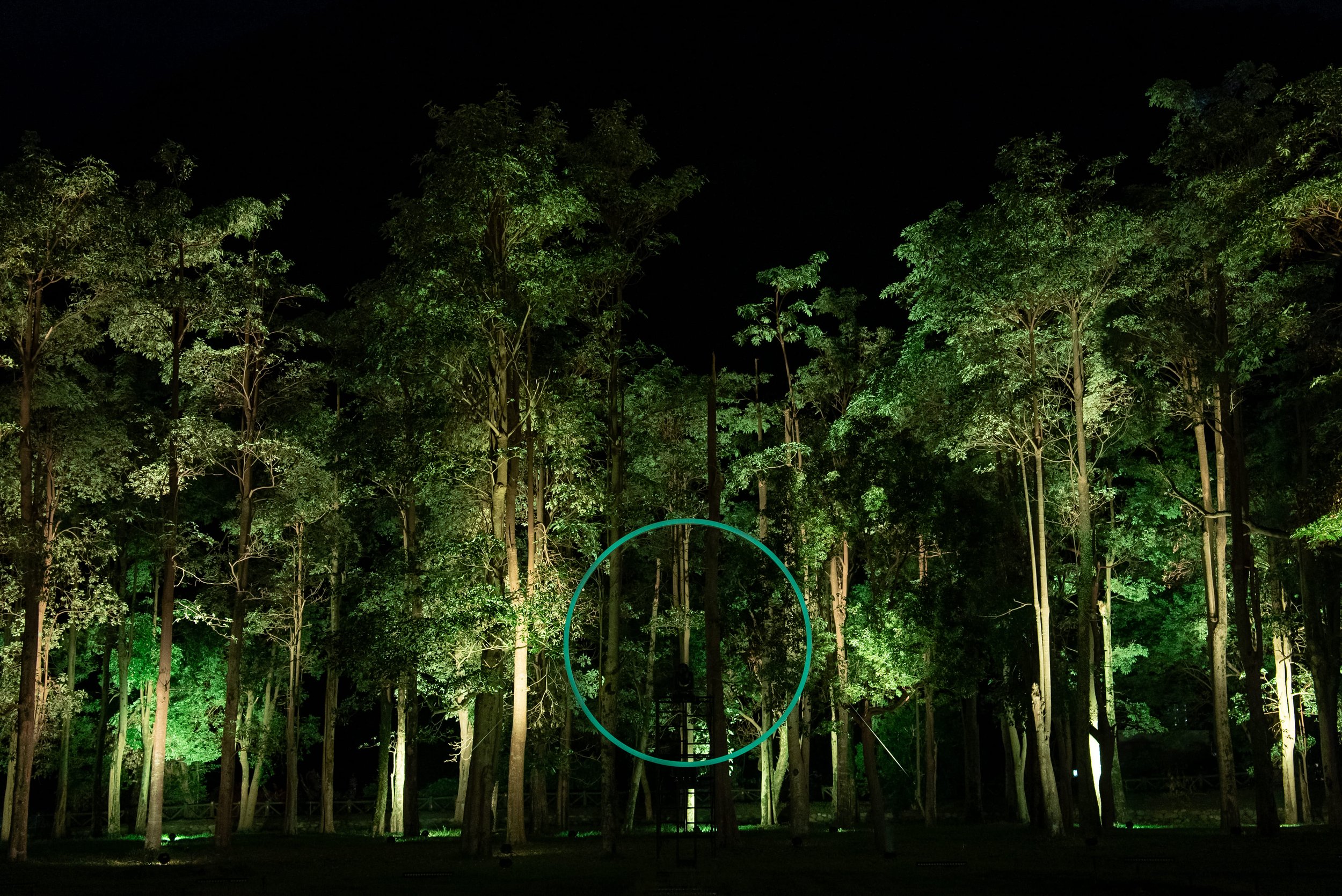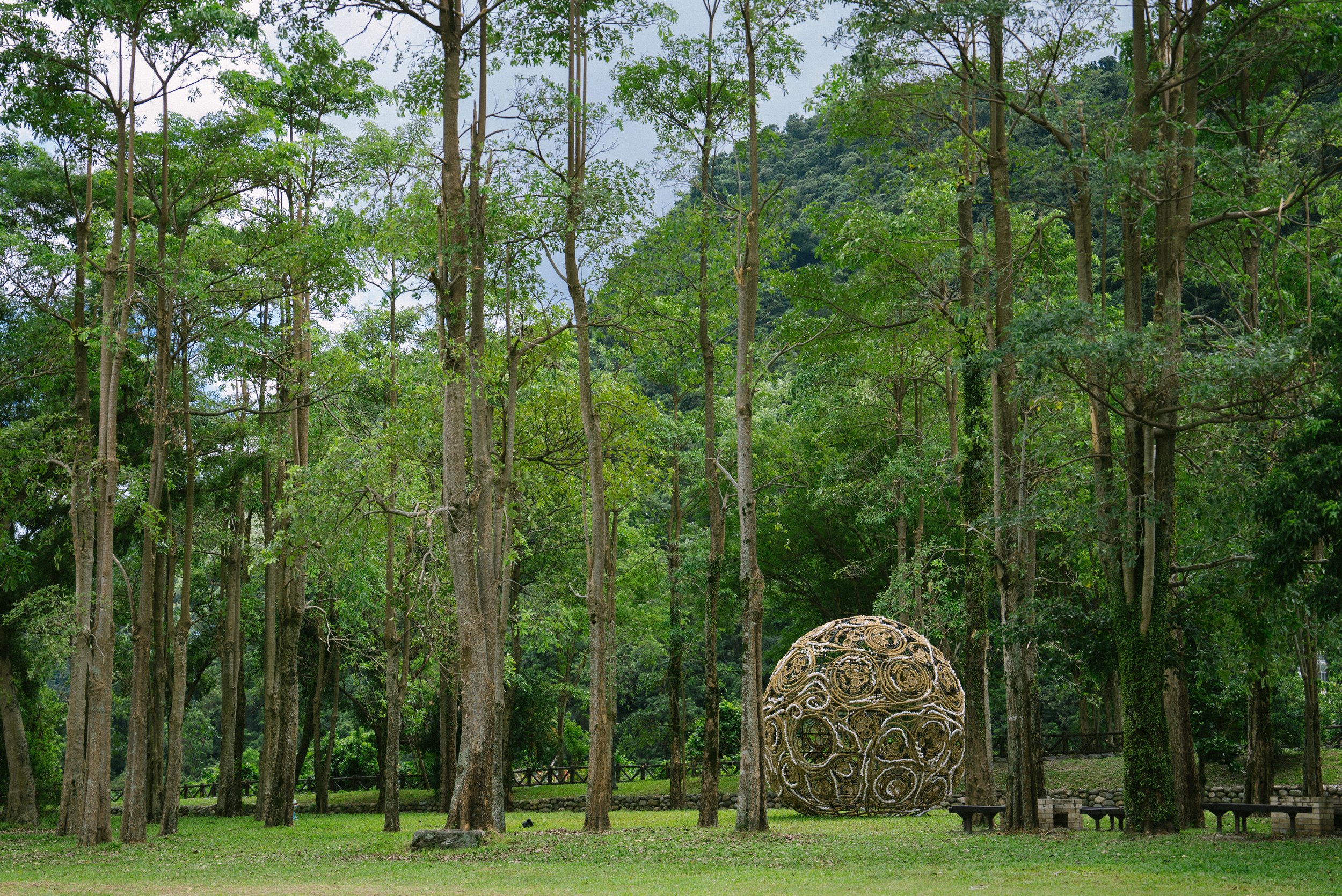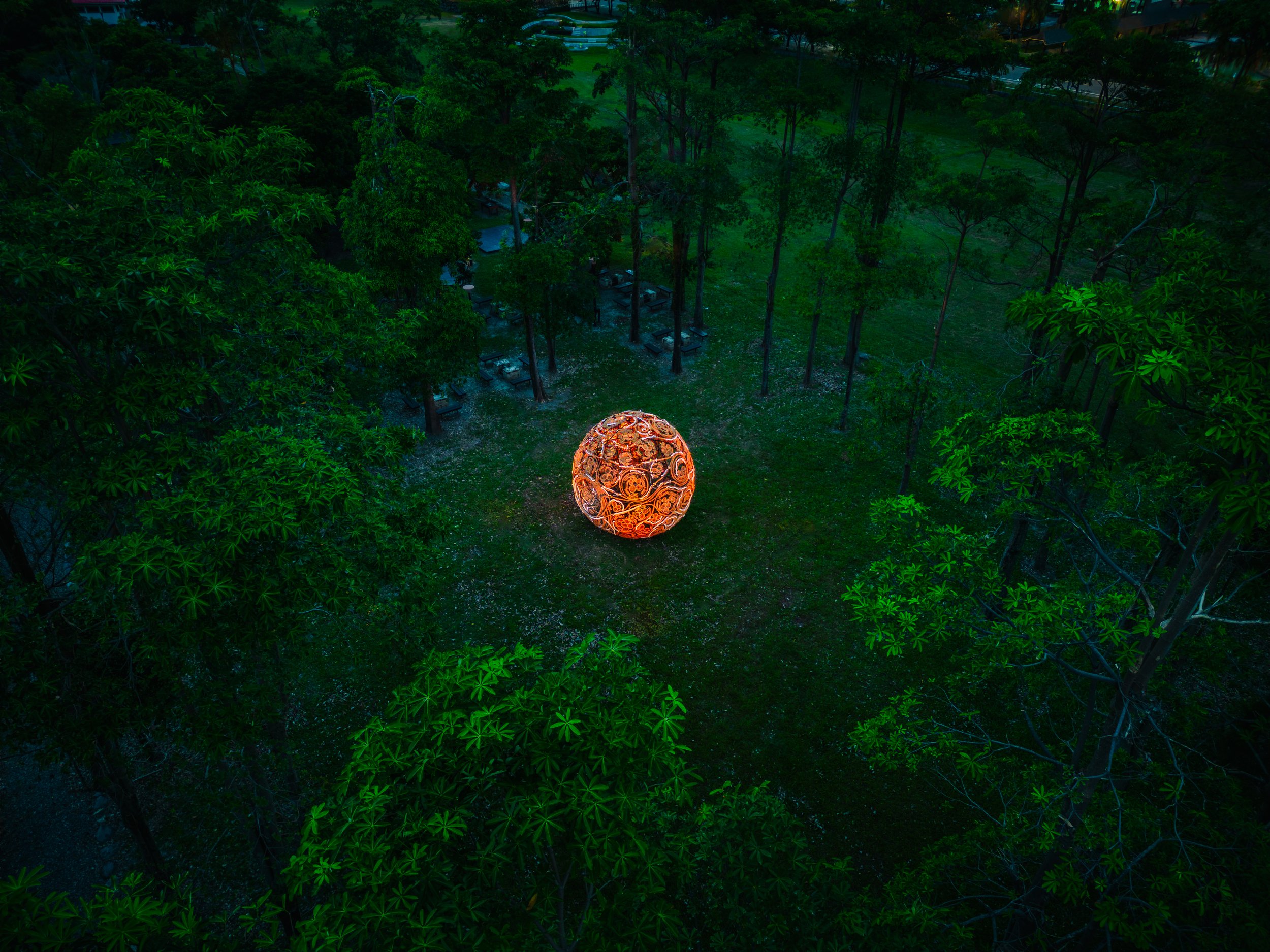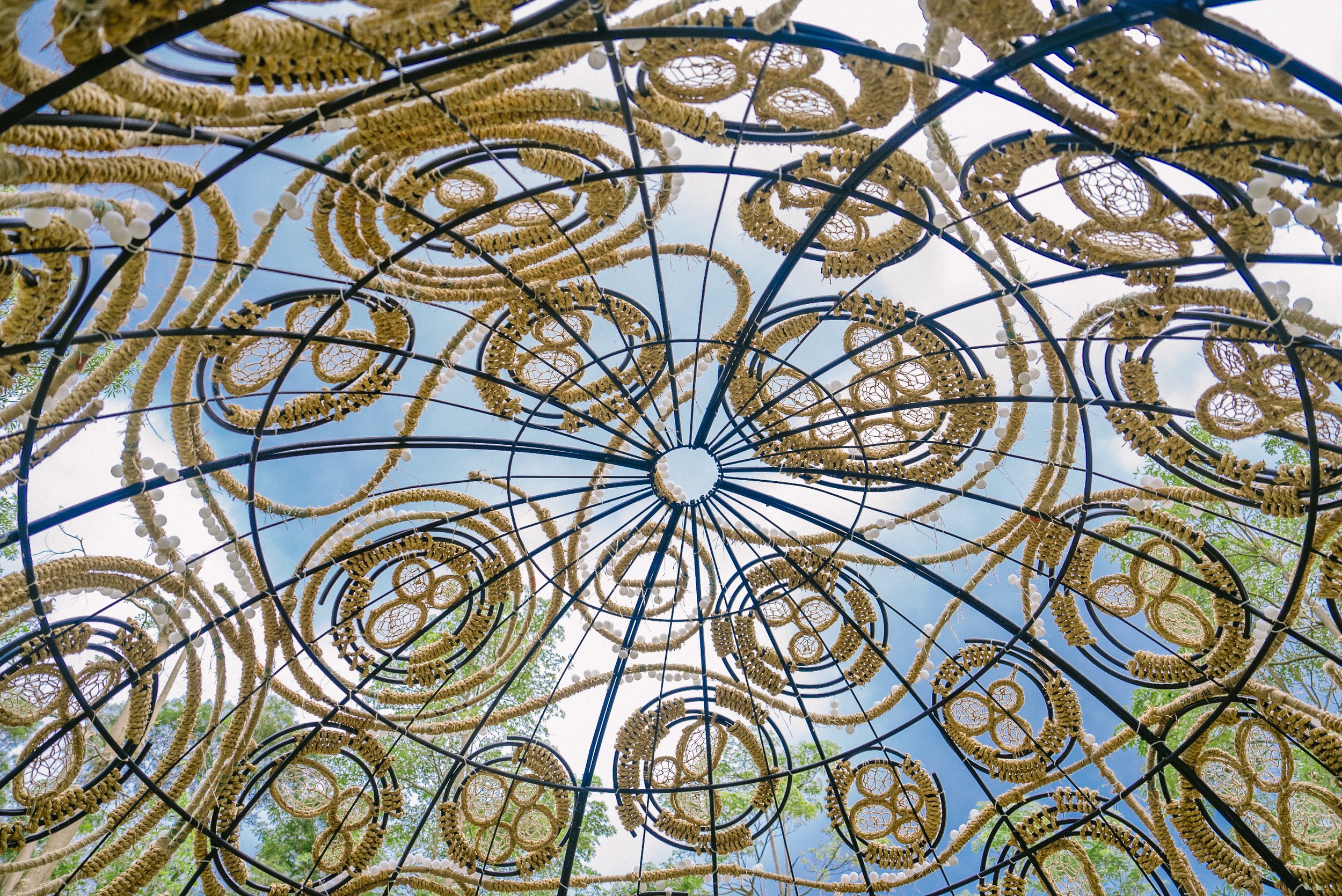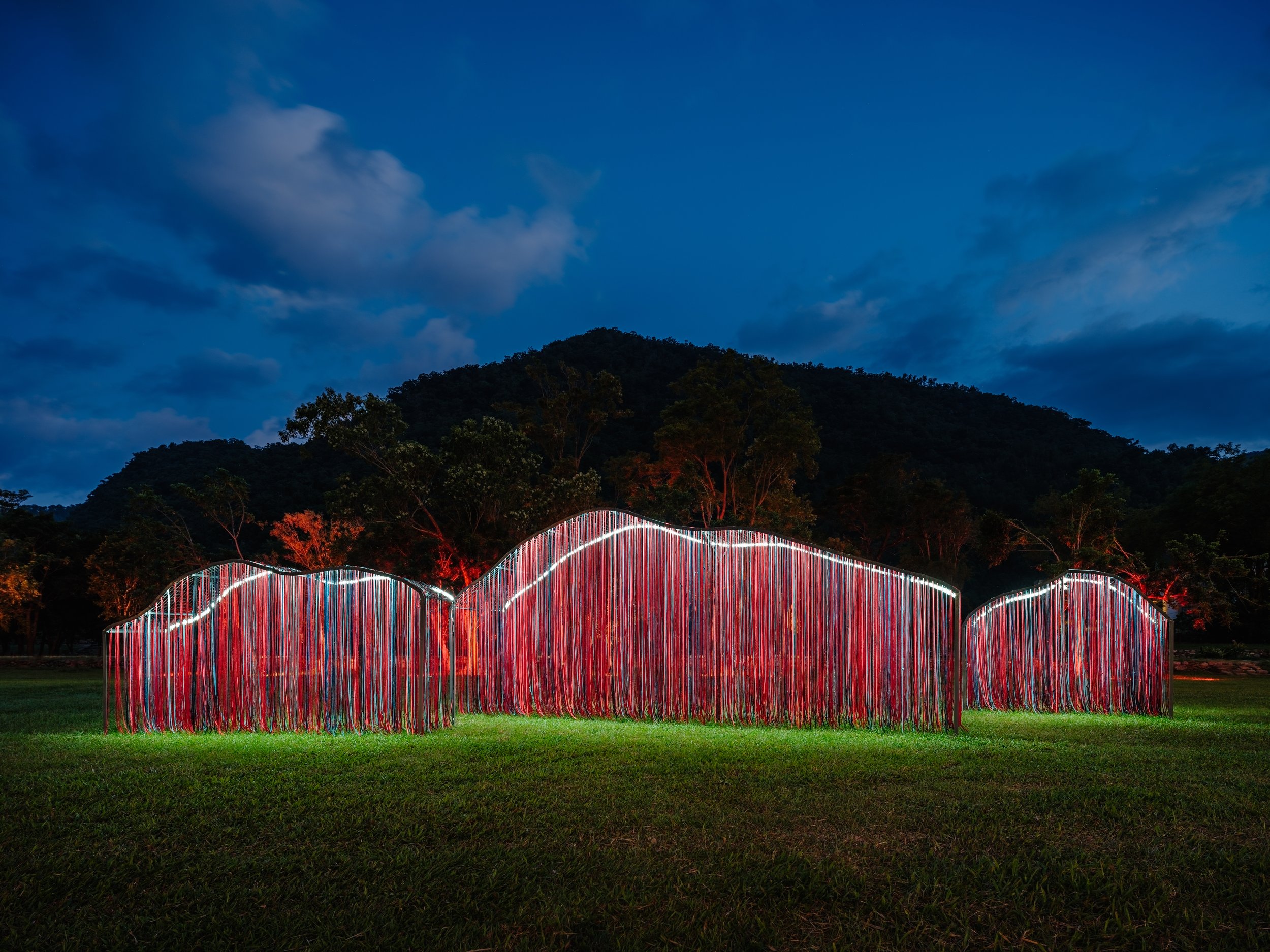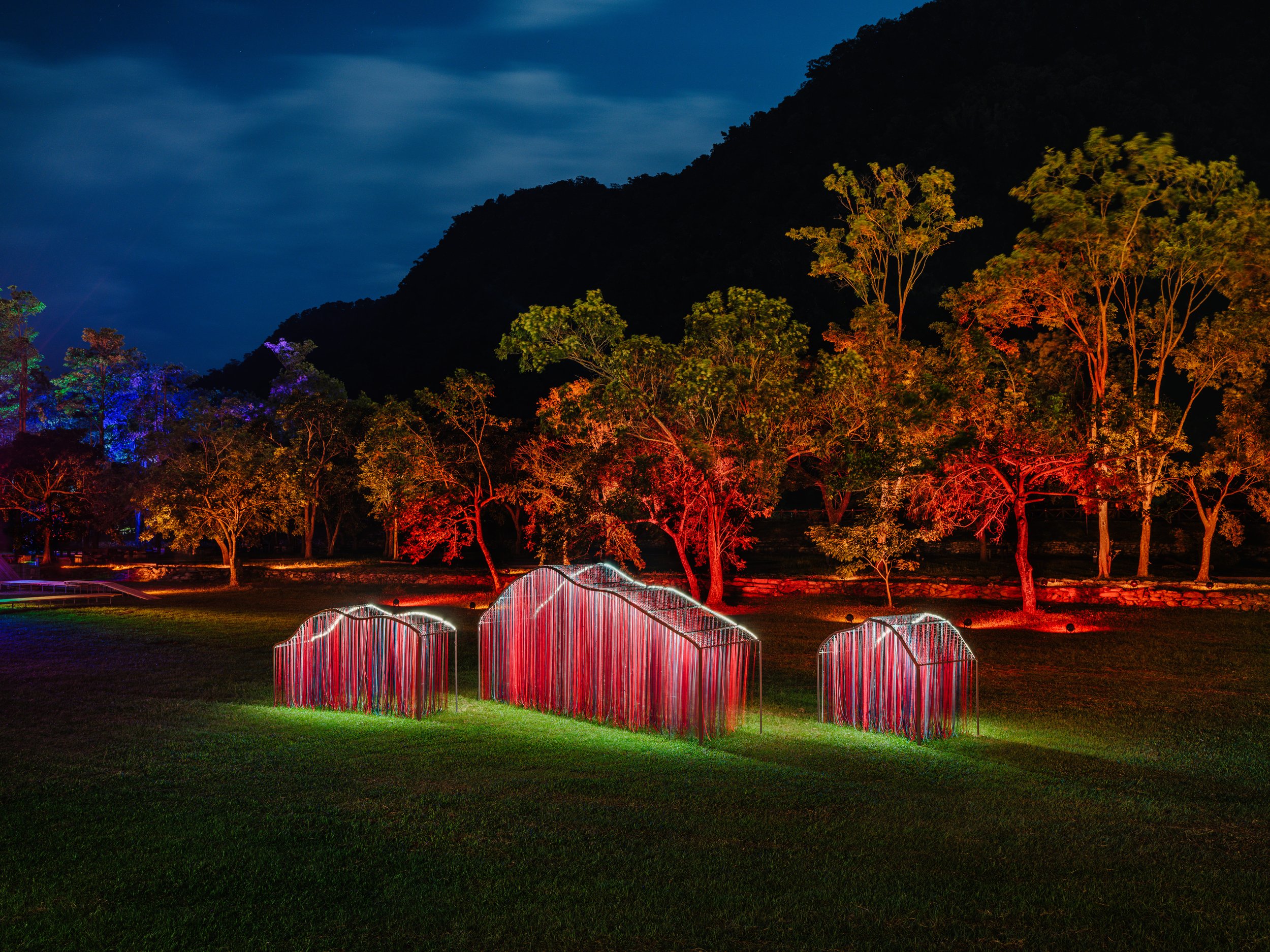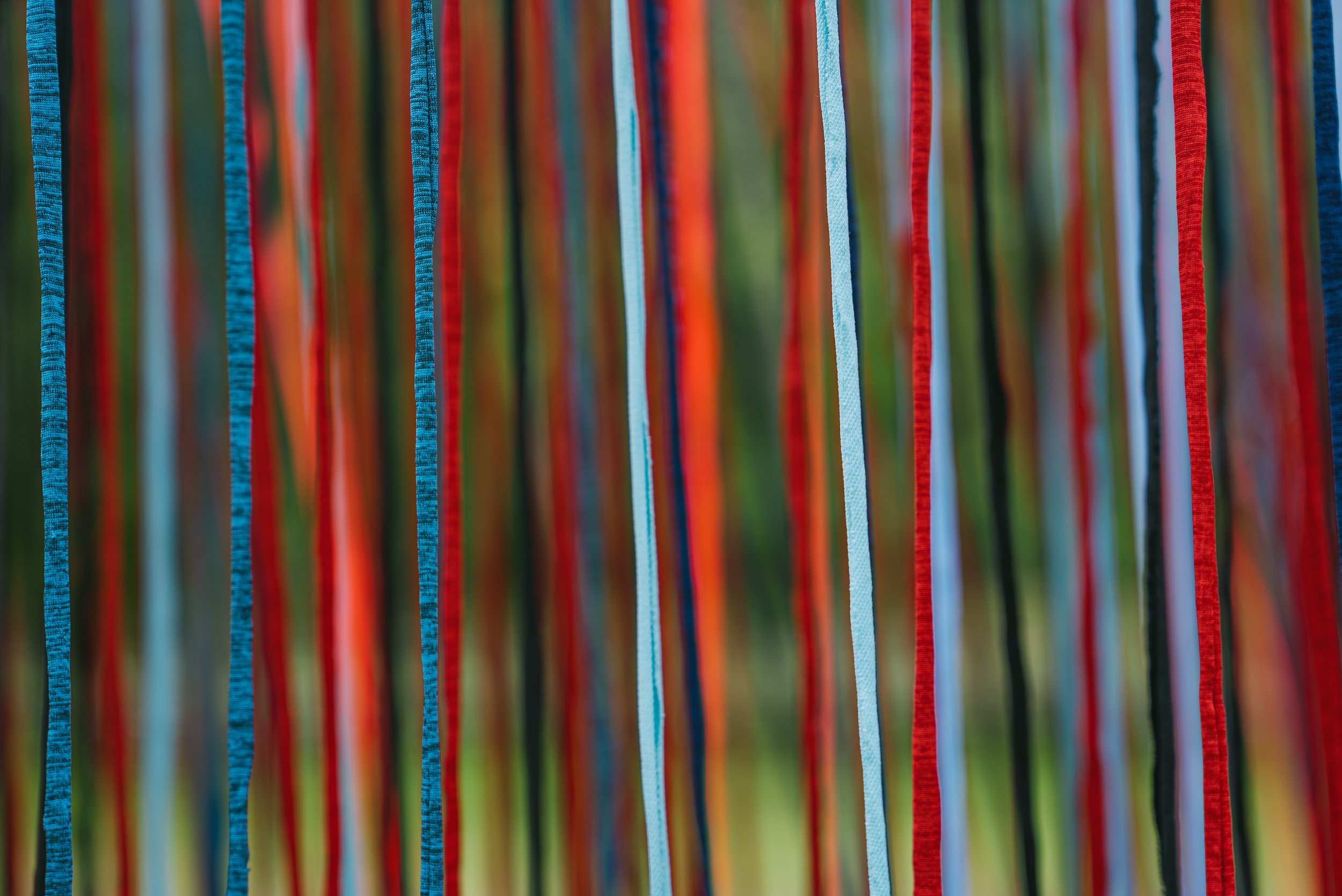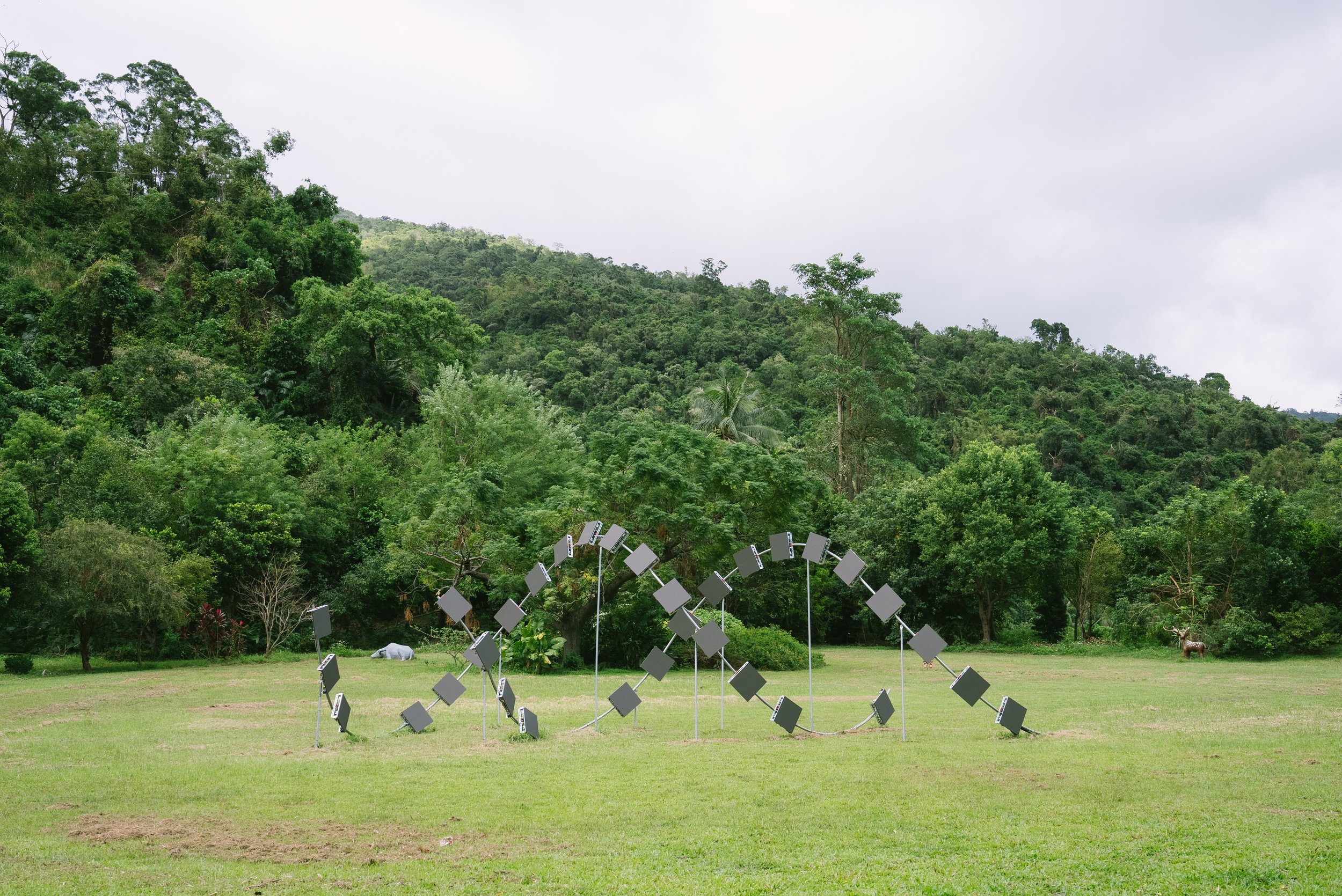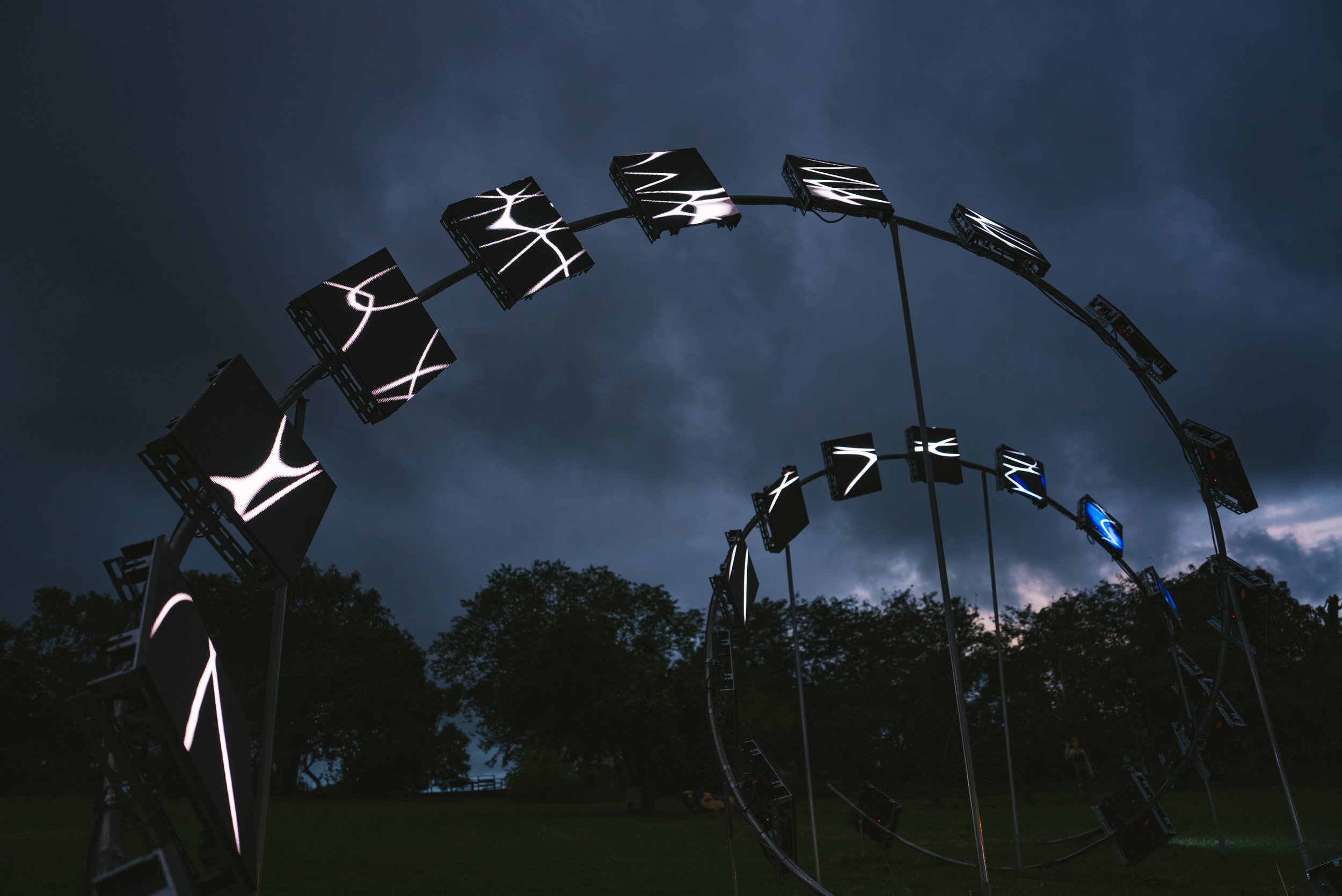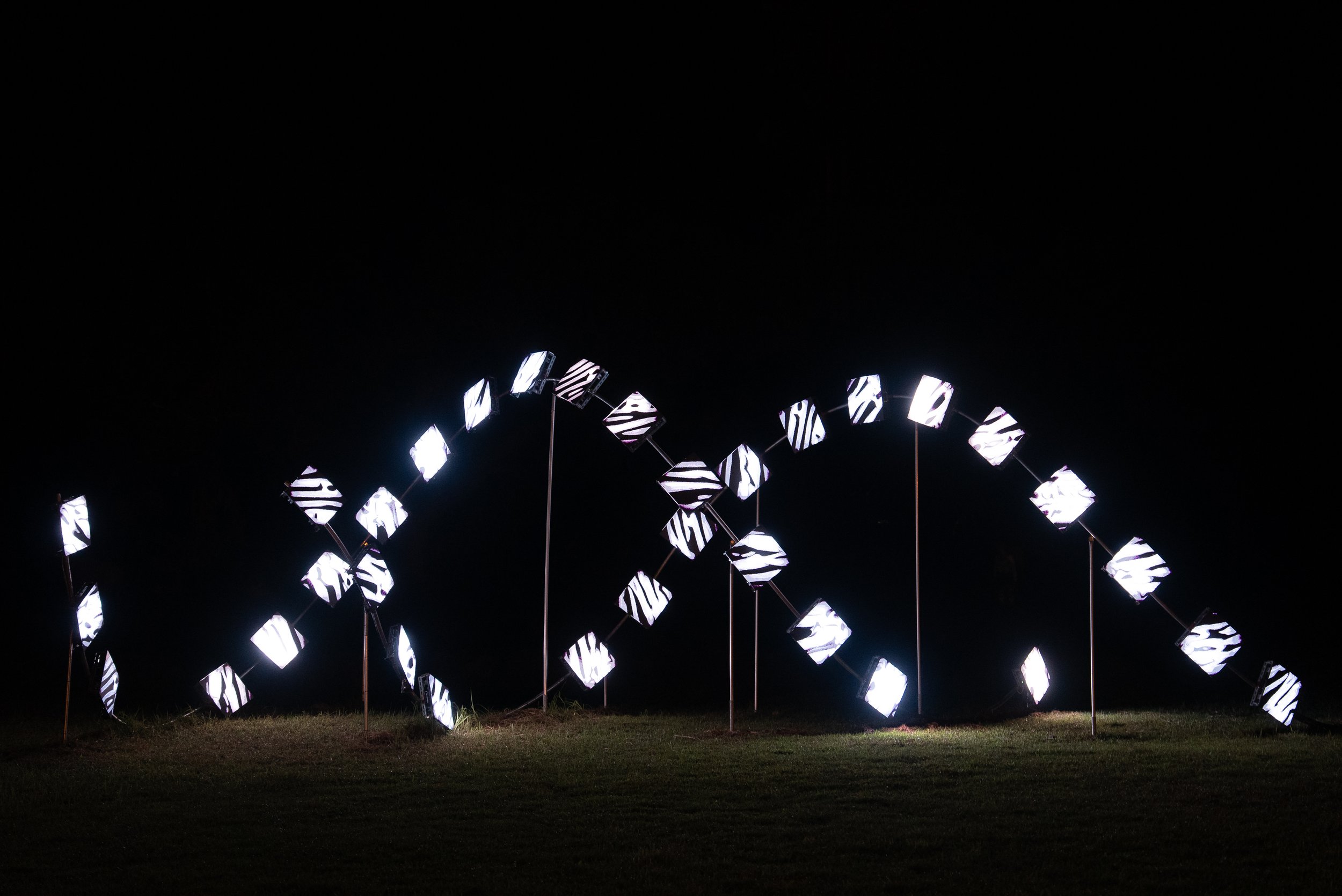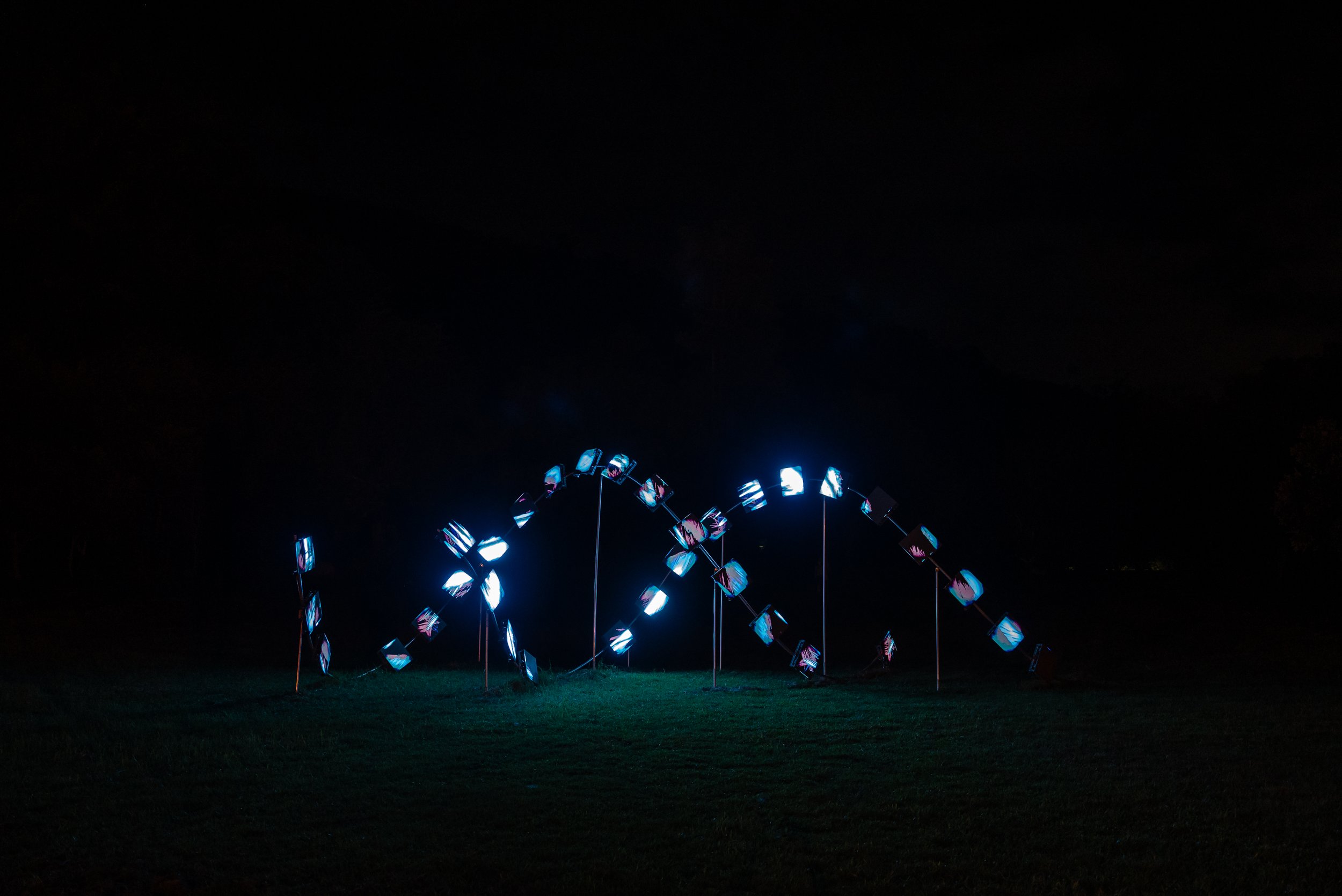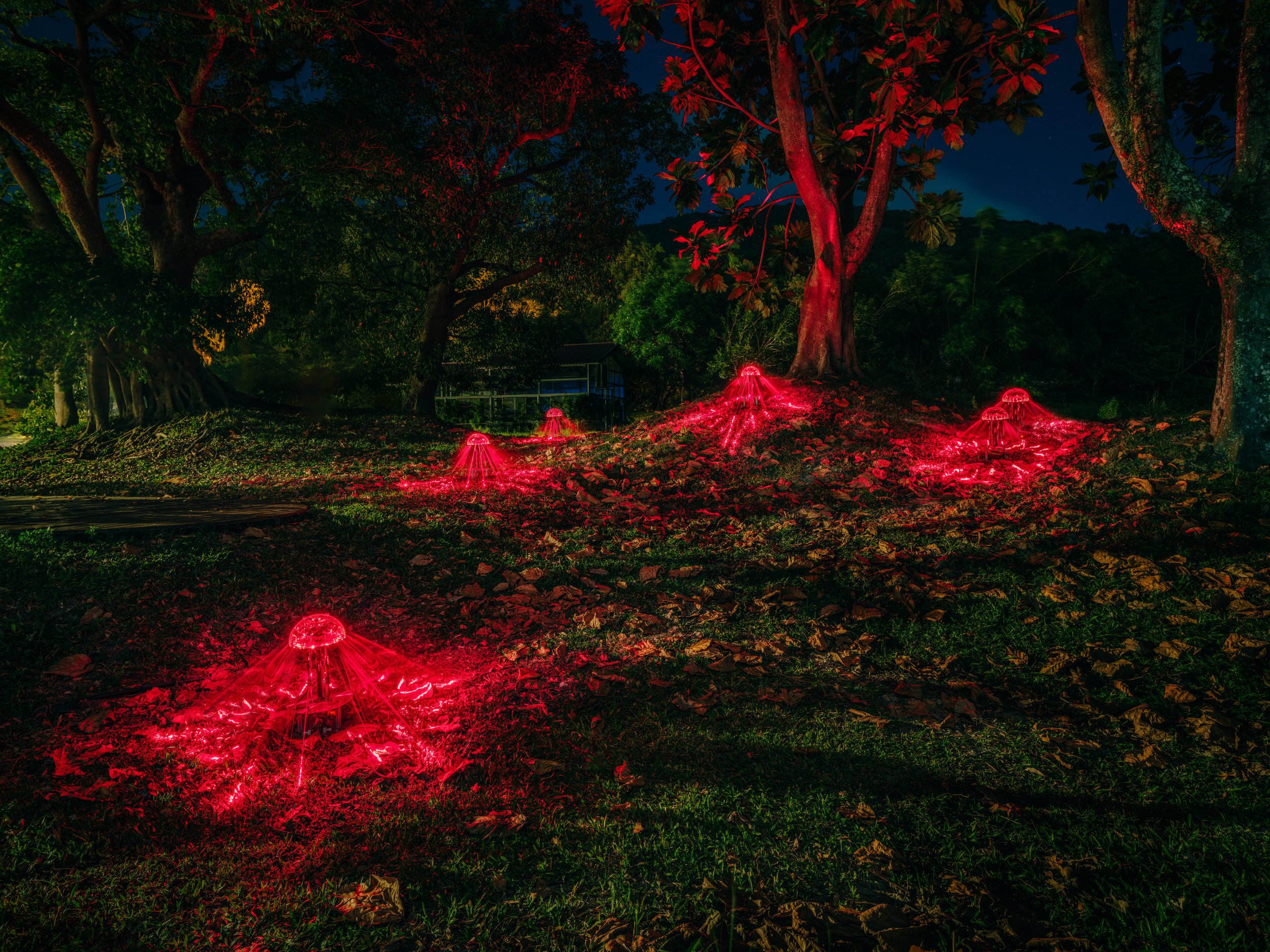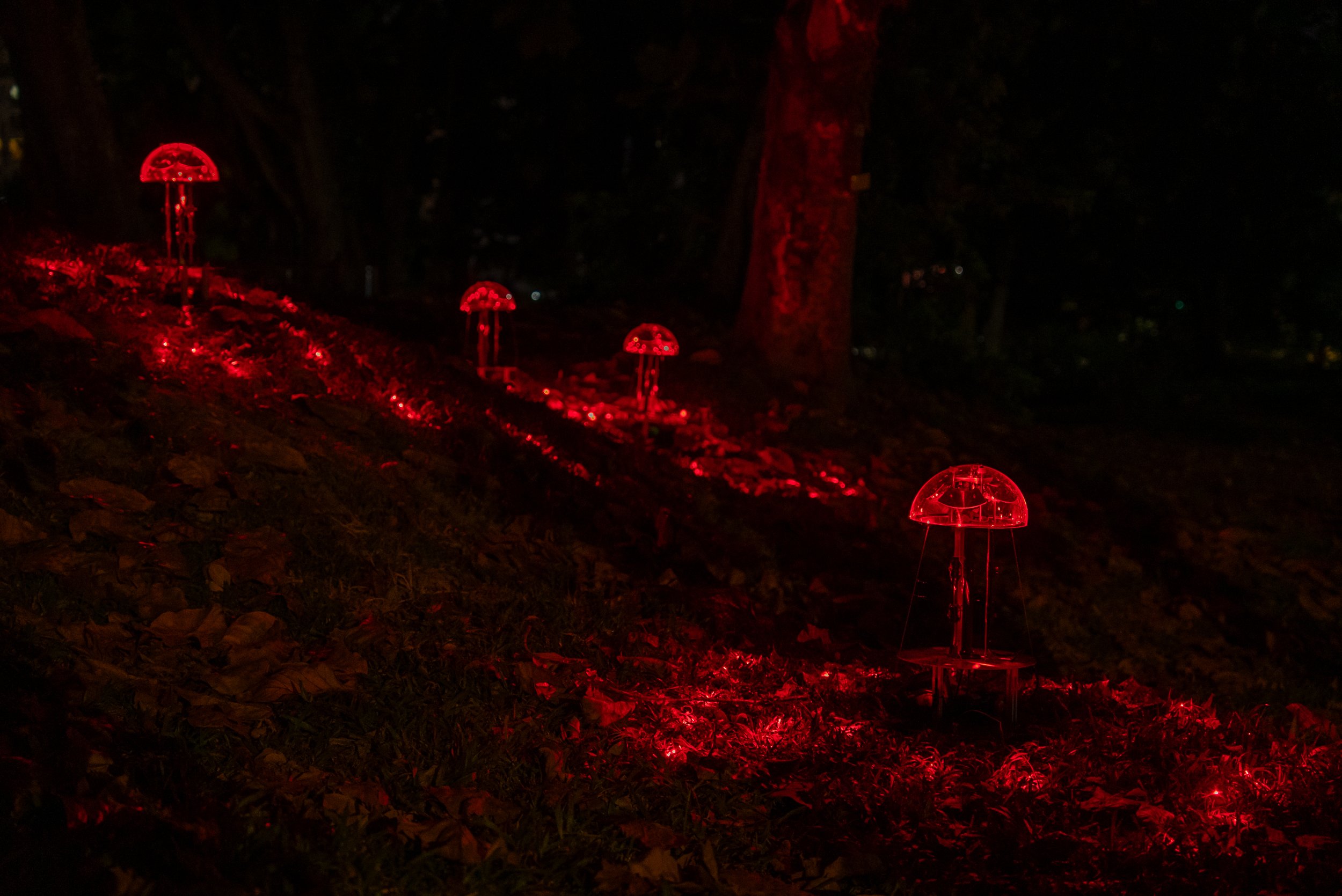台東光祭-回知本
是時候,該回知本了!療癒身心的天然溫泉、多樣獨特的自然生態、珍貴保存的原民文化、多元族群的融合生活、自成一格的風味美食、青春奔放的成長記憶、美好溫暖的旅行回憶⋯⋯,看似不同的元素,都因著知本這片土地,連成一串悠遠綿長的故事循環。
不論上一次的知本記憶距離你有多遠,隨著2023【台東光祭】回知本吧!用當代手法呈現在地元素,以聲光藝術陪伴人們回知本,回到那些與家人朋友共享的放鬆與溫暖,更回到那千年前原住民族人辛勞工作後,沈浸在溫泉溪水中的天人合一感受。
不論你現在身處的地方距離知本有多遠,跟著【台東光祭】回知本吧!走進藝術作品,看見飛魚奮力迴游的追尋與青斑蝶渡海回台東的故事,感受這片豐饒土地稻穗滿溢的美好,聆聽原民旋律中的悠遠神話,找回如同南島民族向世界出發時探索的勇氣。回知本,回到再出發的起點,新的故事與新的相遇,在【台東光祭】中不斷循環延續。
Taitung Light Festival - Return to Zhiben
The moment has come, it’s time to return to Zhiben. Serene hot springs, rich natural ecology, cherished indigenous cultures, the harmonious coexistence of various ethnic groups, distinctive cuisine, the exuberant memories of youthful growth, and heartwarming travel memories... These elements, seemingly diverse, are all intertwined in a chain of profound and enduring stories united by the land of Zhiben.No matter how distant your last memory of Zhiben is, join us in returning to Zhiben at the 2023 Taitung Light Festival! Through contemporary techniques, the Taitung Light Festival showcases local elements, employing sound and light art to guide us back to Zhiben — back to those moments of relaxation and warmth shared with family and friends, and even further back to the unity with nature that the indigenous people felt a thousand years ago when they found respite in the hot springs after a hard day’s work.
No matter where you are now or how far away you are from Zhiben, follow the Taitung Light Festival back to Zhiben! Immerse yourself in the artworks, witness the flying fish’s determined journey, watch the ocean-crossing of Blue Tiger (a type of butterfly) ocean-crossing return to Taitung, feel the land’s bounty with overflowing rice ears, listen to the indigenous melodies from afar yet close to your heart, and rediscover the courage of the Austronesian people as they ventured forth into the world.Return to Zhiben, back to the starting point of a new journey. New stories and new encounters continue to cycle and unfold within the Taitung Light Festival.
exhibition info:
展覽資訊
展期|2023/10/6 (五)~2023/11/19 (日)
指導單位|國家發展委員會、文化部
主辦單位|臺東縣政府文化處
協辦單位|農業部農田水利署臺東管理處、臺東縣卑南鄉公所、臺東縣農會、臺東縣觀光協會、臺東縣知本溫泉觀光發展促進協會
全案活動統籌策劃 | 都市藝術工作室
策展規劃執行|都市藝術工作室 UrbanART Studio
藝術總監|杜昭賢
專案經理|葉書維
活動規劃|盧俊強
專案執行|盧俊強、林育嫻
媒體宣傳|林育嫺、林育瑄
整體視覺統籌|Path & Landforms
動畫製作|廖東騰
影片製作|存在映像工作室
平面攝影|戴倫
小提燈設計|林品毅
artworks:
遷徙中的蝴蝶 Migratory Butterfly
創作者|森岡厚次
Creator|Morioka Koji
創作理念|
看似微小脆弱的蝴蝶,竟然擁有渡海遷徙的能量!小小的青斑蝶會在日本與台灣兩地間乘著季風遷徙,每年6月,部分台灣的青斑蝶會隨西南氣流飛至日本;9月中旬後,日本的青斑蝶則隨東北季風往南方遷來台灣,且半數以上在蘭嶼被發現。
相較於大自然,人類不也像蝴蝶一樣微小嗎?千萬年前,人們憑著什麼力量渡海遷徙,又是什麼力量的召喚,讓我們奮力回歸?
擅長以透光和紙般的媒材創作立體造型雕塑的藝術家森岡厚次,帶領日本京都藝術大學團隊,在9月有如青斑蝶一樣,從日本飛來台灣現地創作。10公尺高的作品主體造型發想自蝶蛹,破蛹而出、色彩斑斕的蝴蝶隨著氣流繞圈交錯飛行。作品中的蝴蝶,有些要出發飛向遠方,有些則正要回到自己的出生地,不同方向的蝴蝶在知本交會,象徵著台灣與日本在各方面的交流。
Design concept|
Seemingly delicate and small, butterflies have the amazing ability to migrate across oceans! The tiny Blue Tiger (Tirumala limniace; a type of butterfly) undertakes migratory journeys between Japan and Taiwan, riding the seasonal winds. Every June, Taiwanese Blue Tigers follow the southwest air currents to fly to Japan. Later, in mid-September, Japanese Blue Tigers migrate south to Taiwan with the northeast monsoon, and more than half of them are discovered on Lanyu.
Aren’t humans as tiny as butterflies compared to nature? Millennia ago, with what power did people cross the oceans and migrate? And what power beckoned us to strive to return?
Artist Morioka Koji excels at creating three-dimensional sculptures from translucent and paper-like materials. Leading a team from Kyoto University of the Arts in Japan, he arrives in Taiwan in September, much like the Blue Tiger, to engage in on-site creation. The 10-meter-high artwork is inspired by the chrysalis of a butterfly. Emerging from the cocoon, the vibrant butterflies intertwine and fly in circles with the currents. Within the artwork, some butterflies depart for distant horizons while others return to their place of birth. Butterflies from different directions converge in Zhiben, symbolizing the multifaceted exchanges between Taiwan and Japan.
洄・尋 Migratory・Searching
創作者|有用主張
Creator|UxU Studio
創作理念|
人類從幾十萬年前為了生存開始了擴張與遷徙,自然界的許多生物也為了生存而依循季節遷移。無論是人類或是動物的移動,都是為了追尋生命的延續,就像飛魚的洄遊延續了種族,也提供了南島民族的食物並形成文化。作品《洄・尋》,以自然界的循環為創作靈感,試圖呈現生生不息的狀態,如同不斷重複的遷徙與生命記憶的延續。
作品主體由許多的圓環組成,錯位的排列使整體形成別具動感的立體環圈;每個圓圈看似獨立卻又前後交織,環環相扣如同自然界的生態。
作品的中心為一顆鏡面圓球,白天會映照環境的景色,並隨著天光變化呈現不同表情,晚上則會反射與延續作品的燈光效果。作品的圓環結構上設置不斷循環跑動的燈光,其動態彷彿流星又似魚群不斷向內匯聚,洄流朝向作品中心的圓球、朝向未知的境地,永無止境的追尋。
Design concept|
Hundreds of thousands of years ago, humans began to expand in order to survive, just as many creatures in nature migrate with the seasons to ensure their survival. Whether it’s the movement of humans or animals, it’s all about the pursuit of life’s continuity. Similar to the migration of the flying fish, which sustains its species and provides sustenance for the Austronesian peoples and shapes their culture, this artwork is inspired by the cycles of the natural world. It aims to represent the state of perpetual growth and renewal, similar to the continuous cycles of migration and the perpetuation of life’s memories.
This artwork is composed of numerous circular rings arranged in a staggered fashion to create a dynamic three-dimensional loop. Each circle appears independent, yet they are interwoven in a sequential manner, interconnected like the ecology of the natural world.
At the center of the artwork is a mirrored sphere. During the day, it reflects the surrounding landscape, taking on different expressions as the daylight changes. At night, it reflects and extends the light effects of the artwork. The circular ring structure of the artwork is arranged with continuously circulating lights that resemble shooting stars and yet resemble a gathering of fish, continuously converging inward. This flow moves towards the central sphere of the artwork, towards the unknown realm, representing an endless pursuit.
飛於波光和大地之間 Soaring Between Shimmering Waves and the Land
創作者|凡京設計
Creator|Vangin Design
創作理念|
在南島海洋文化、尤其是達悟族文化中,洄游的飛魚是生命的泉源,不僅是隨著黑潮而來的漁獲,更是族群文化與生活,並且要以尊敬的心態面對飛魚。
每年飛魚群隨海潮而來,乘著海風,從天光日落到星空月色,飛躍間翻起浪花千片,波光閃閃交織出生命力的脈動。回到人與大地間的關係,如飛魚洄游的旅程,我們或許因為生活而不斷遷徙和改變,但別忘了回頭看看那片你曾經熟悉的土地,還有那些因時間推進而遺忘的初衷。
作品運用花架隧道的結構,發光的飛魚群環繞在人們兩旁、上方,如同與飛魚一起朝著出生地洄游,飛躍於波光與大地之間。
Design concept|
In Austronesian maritime culture, especially in the culture of the Tao people, migrating flying fish symbolize the source of life. They are not just a catch that arrives with the Kuroshio Current; they represent the cultural and subsistence essence of the community. Therefore, it is important to approach flying fish with respect.
Every year, a lot of flying fish ride the tides, carried by the ocean breeze, from dawn to starry night. Their leaps create ripples and sparkling patterns that interweave to signify vitality. The relationship between humans and the earth mirrors the journey of the flying fish. While our lives may involve constant movement and change, let’s not forget to turn back and revisit the land we once knew well, along with the original intentions that time may have obscured.
The artwork uses the structure of a floral arch tunnel that surrounds the people with glowing flying fish on either side and above, as if accompanying the flying fish on their migration back to their birthplace. They soar between shimmering waves and the land.
空間劇場#3 - 2023的儀式 Spatial Theater #3 - Ritual of 2023
創作者|大聲光電
Creator|Loudly Lightning
創作理念|
古老的年代,「儀式」承載著神聖而強大的力量,透過儀式可以帶來人與神、人與自然的聯繫;受到工業時代的影響,「儀式」被簡化為切換生活節奏的動作。然而,原住民的祭儀文化卻保留著對萬物靈性的信仰,宣告著物有物靈、水有水靈、樹有樹靈、山有山靈的崇敬。
此作品是一齣光與自然的劇場,從外部的草地領域開始,燈光沿著地面,緩緩流動至內部的樹林。透過光的導引,感官跟隨著光線進入樹林前方那環形結構之中;光在環繞時留下閃爍的殘影,彷彿這「人造物神」在大自然間散發著能量,遊走於現實與虛幻之間。
讓我們披上詩意的羽翼,穿越時空的迴旋,親身體驗這場奇幻的藝術之旅。在這片草地上,儀式的神聖與現代的小確幸交融,引向一個充滿韻律與寧靜的奇幻境界。
Design concept|
In ancient times, “Ritual” carried sacred and powerful power, allowing for a connection between humans and deities, humans and nature. Influenced by the industrial era, “Ritual” has been simplified into actions that change the pace of life. However, indigenous ceremonial culture retains its belief in all things, proclaiming reverence for the spirits within objects, water, trees, and mountains.
This artwork is a theater of light and nature. It begins in the outer grassland, where the light flows gently along the ground into the inner forest. Guided by the light, the senses follow the beams into the circular structure within the forest. As the light encircles, it leaves behind flickering traces, as if an “artificial deity” is emitting energy in the midst of nature, wandering between reality and illusion.
Let’s put on the wings of poetry and travel through the spiral of time and space to personally experience this enchanting artistic journey. On this grassland, sacred rituals intertwine with modern pleasures, leading to a realm of rhythm and tranquility, a realm of fantasy.
美麗的稻穗 Beautiful Rice Ears
創作者|峨冷‧魯魯安 (安聖惠)
Creator|Eleng Luluan
創作理念|
「非常美麗的,我們今年的稻穗
快了,快了,家鄉的水稻將要收割!
歡呼呀!我們高聲歡呼!
我要寫信給在金門的哥哥⋯⋯」
有「卑南族音樂靈魂」之稱的卑南族音樂歌謠作曲家及教育家陸森寶(1910-1988,卑南族名Balriwakes Raera),在八二三砲戰的背景下,看不到年輕的力量在美麗的稻田上幫忙,所以他寫了《美麗的稻穗》,思念在前線的族人。
此作品藉由這首歌做為主要的精神意涵,感謝老師為這塊土地留下美好的歌曲,傳唱給世世代代的孩子們。作品造型以稻草的線形與米粒,形成時間的滾軸;稻草梗與米粒象徵有風有雨的大自然恩賜,圓形訴說著圍舞歌唱的故鄉召喚,呼喚這個時代的年輕人,回到家鄉,以各種不同的方式,耕耘這片豐饒的土地。
Design concept|
Extremely beautiful, the rice ears of this year
It’s coming soon, coming soon, the rice in our hometown will be harvested!
Cheer, oh! Let’s cheer loudly!
I will write a letter to my brother in Kinmen...
Balriwakes Raera (1910-1988) was a renowned Puyuma tribal folk song composer and educator, often referred to as the “Soul of Puyuma Music.” He composed the song “Beautiful Rice Ears” against the backdrop of the 823 Artillery Shell Bombardment (Second Taiwan Strait Crisis). Due to the conflict, he was unable to witness the youthful strength in the beautiful rice fields of his hometown. As a tribute to his compatriots who were on the front lines, he created this song to express his deep longing for them.
This artwork uses this song as its primary spiritual essence. We are grateful to Balriwakes Raera for leaving this beautiful song for the land to pass on to generations of children. The artwork’s design is composed of straw-like lines and grains of rice, forming a rolling scroll of time. The straw and rice symbolize the gifts of wind and rain from nature, while the circular shape represents the ancestors’ call to the homeland in dance and song, summoning the young of this era to return to their hometown. It beckons them to cultivate this fertile land in various ways.
山海絡 Mountain and Ocean Interwove
創作者|王振瑋
Creator|Wang Zhen-Wei
創作理念|
回,也是回眸。小舟出了太平洋,回眸看到的剪影,是中央山脈的綿延曲線,那時的心情是讚嘆還是不捨?在勇往直前的信心中,是否已定下回返之約?
本作品以中央山脈的山形為構成符碼,勾勒出作品輪廓;夜裡在飄動間透出隱然柔光的千絲萬縷,是血脈和筋絡組成的肉身,也是人們數千年來與這塊土地如千絲萬縷般的連結。
作品意喻南島文化的遷徙與分佈在溯源的路徑中,血緣、語言、生態和物種的連結,總是有著綿密線索和不可分割的重疊。
Design concept|
Back also means to look back. As the small boat ventured across the Pacific, looking back revealed the undulating curves of the Central Mountain Range. Was the feeling at that moment one of admiration or reluctance to part? Amidst the resolute confidence of moving forward, was a promise to return already etched in place?
This artwork uses the silhouette of the Central Mountain Range as its foundational motif, outlining the contours of the piece. At night, amidst the gentle movement, faint threads of soft light emerge, representing the physical embodiment of bloodlines. They also represent the intricate connections woven over thousands of years between people and this land.
The artwork signifies the migration and ancestral paths of Austronesian culture. The connections of bloodlines, languages, ecology and species carry intricate threads and inseparability.
回聲光譜 Echo Spectrum
創作者|黑川互動媒體藝術 X 山影藝術實驗所
Creator|Peppercorns Interactive Media Art X SANYIN Visual Art Lab
創作理念|
作品以找回原有知本的樣子出發,結合卑南族知名創作歌手桑布伊的歌曲〈創世紀 muparvuwa’i kani intrav i rukup〉,藉由族語講述與歌聲,訴說古老傳說中,人與萬物從這塊土地中成長扎根、密不可分的的故事。
作品位於知本溪旁的陽光草坪,以LED螢幕燈具建構的兩條大型曲線,形成DNA(基因)螺旋長鏈一般的造型,喻表著人們記憶深處歸向山林野溪的DNA在知本被喚醒;同時也讓高度發展的現今科技作為與過去連結的橋樑,透過在地學子吟唱的曲調,喚起知本遙遠的記憶,並將歌謠進行轉化爲多塊影像串連的視覺呈現,觀者可如同VJ一般,以自己的手機控制裝置的顏色與成像,建構起與作品間的共鳴。
Design concept|
The artwork aims to rediscover the original appearance of Zhiben by incorporating the song "muparvuwa'i kani intrav i rukup" by the renowned Puyuma singer Sangpuy. Through the native language and melodies, the work narrates the ancient legends that describe how people and all things are inextricably rooted and grown from this land.
Located on the sunny grassy field by the Zhiben River, this artwork consists of two large curved shapes made of LED screen lights. These curves form a DNA-like spiral, symbolizing the awakening of the deep-rooted memory of people’s connection to the mountains, forests and wild rivers of Zhiben. At the same time, it uses advanced technology as a bridge to connect with the past. The artwork evokes distant memories of Zhiben through melodies sung by local students. The songs are transformed into a visual display of interconnected images. Viewers can engage with it like a VJ, using their own mobile phones to control the colors and images, creating a connection and resonance between themselves and the artwork.
泉沓 Rumblings in spring
創作者|貳進
Creator|2enter
創作理念|
草木、鳥獸、昆蟲、浮游等萬物共生於群山綠茵之間,造就了這片大地千萬年的動態平衡,這樣的平衡,使大地得以週而復始地、以均勻的氣息呼吸。藝術家運用機械馬達、雷射光束與水霧,擬仿一種自然的韻律,試圖詮釋生命與自然的微妙關係。
霧氣繚繞的水氣,呈現溫泉般氤氳混沌之感;眾多密集的旋轉光束或高或低,以一種如自轉般的節奏律動著。當光束附著於水霧,其行跡才得以顯現;也因光的照耀,我們才能一窺雲霧的變幻莫測。水霧與光束相互棲息於彼此之中,一如人們棲息於溫泉裡,與泉水、霧氣融合為一個小宇宙,以均勻的呼吸,找到與自然的連結與平衡。
技術工程統籌:林俊遑 ; 佈展協力:林俊遑、黃紀虹
Design concept|
Amidst the towering mountains, flora, fauna, insects and floating beings live together, creating a timeless dynamic balance in this land. This delicate balance allows the earth to renew itself cyclically, breathing with a peaceful rhythm. Using mechanical motors, laser beams and fog, the artist mimics a natural cadence and seeks to reveal the subtle relationship between life and nature.
Mist wraps around the air, evoking a sense of misty warmth similar to hot springs. Many densely packed rotating beams move in a pattern resembling the Earth rotating. Only when the beams cross the fog do their paths become visible, and only through the illumination do we catch a glimpse of the ever-shifting clouds. Mist and rays exist together, much like people nestled in hot springs, merging with water and mist to form a miniature universe. Through a synchronized breath, they find a connection and balance with nature.
Technical Engineering Coordination:Chun-Huang Lin
Exhibition Assistance :Chun-Huang Lin, Chi-Hung Huang
Design & merchandise :
🦋 台東光祭.逐光蝶影小提燈🦋
小小的蝴蝶,能讓蓊鬱森林變得色彩斑斕,也能擁有渡海的能量。 以在台灣、日本之間遷徙的青斑蝶為造型,輕輕晃動,「逐光蝶影小提燈」就會優雅地拍動翅膀,與投射出的彩蝶光影相偕而行,飛躍在知本夜晚的草原樹叢裡,光彩迷離間,分不清是蝴蝶追逐著光影,還是光影追逐著蝴蝶。

